|
How "Caterpillar" Fights World War II
War
and Peace - Caterpillar
Caterpillar Tractor
Company in World War Two
Peoria, IL
1925 - Present (As Caterpillar)
This page updated 2-3-2025.
Caterpillar's main product
line and its greatest contribution to the winning of World War Two was
its crawler type tractors; the D2, D4, D6, D7, and D8. Between
1942 and the end of 1945, the company produced 56,306 of these tracked
vehicles. They were used extensively by US Army Engineering Battalions
and the US Navy Construction Battalions, better known as the Seabees.
While Caterpillar contributed to the war effort with several other
products, such as tank transmissions and gun carriages to name two.
If it had not produced them, it would not have affected the war effort
in an appreciable way. If Caterpillar had not produced the 56,306
crawler tractors, the war effort would have been severely hindered, and
the war could have lasted longer than it did.
World War Two has been
called the first war where air power made a huge impact.
Strategies by the American military revolved around seizing territory
and building airfields and bases of operation for aircraft to attack
deeper into enemy territory. Then it moved forward and kept
repeating the process, with the final goal being the invasions of
Germany and Japan to bring unconditional surrender. In order for World War Two to be an
airpower war, it was first of all a construction war. Caterpillar crawler tractors
were instrumental in the US military's construction war, and the United
States'
not-so-secret weapon of World War Two.

This vintage Caterpillar D7 tractor is on display
in the early morning sun with a LeTourneau bulldozer on
the front of the tractor and overhead cable system. Caterpillar built 20,503 D7's during World
War Two, which was
40% of the tractors it built from 1942-1945. The Caterpillar D7
with a LeTourneau bulldozer but painted in olive-drab rather than
Caterpillar yellow, was the iconic military crawler tractor-bulldozer
combination of World War II. Author's photo from the front of the Local 150 of the IUOE in Merrillville, IN.
Definition:
It should be noted that the vehicle in the photo is a not a bulldozer.
It is a crawler tractor with an attached bulldozer. Technically
the bulldozer is the blade attached to the front of the tractor.
During World War Two, Caterpillar built tractors. Other companies, such as LeTourneau,
built bulldozer blades and their control mechanisms, then installed them
onto the Caterpillar tractors. Both the US Army and US Navy list
crawler tractors in their list of equipment, not bulldozers. To most persons, including generals and admirals from World
War Two, the entire
tractor with the blade is a bulldozer.
Two of America's top
military officers, General Eisenhower
and Admiral Halsey, included the bulldozer in their respective lists of
the most important weapons contributing to American military success
during WWII. After World War II, each was quoted as having said the
following:
A quote from "The Great Crusade" by General
Dwight D. Eisenhower: "Incidentally, four other pieces of
equipment that most senior officers came to regard as among the most
vital to our success in Africa and Europe were the bulldozer, the jeep,
the 2-1/2 - ton truck and the C-47 airplane."
Asked about the weapons used
to win the war, Admiral Halsey offered: "If I had to give credit
to the instruments and machines that won us the war in the Pacific, I
would rate them in this order: Submarines first, radar second,
planes third, bulldozers fourth."
Pre-World War Two: The early history of Caterpillar is all about
crawler type tractors. While today's company produces a plethora
of construction equipment and owns various other companies producing locomotives to gas turbines, Caterpillar's main product lines
going into World War II were tractors, road graders, and diesel-powered generator sets. Caterpillar started
making its own bulldozers in 1946.
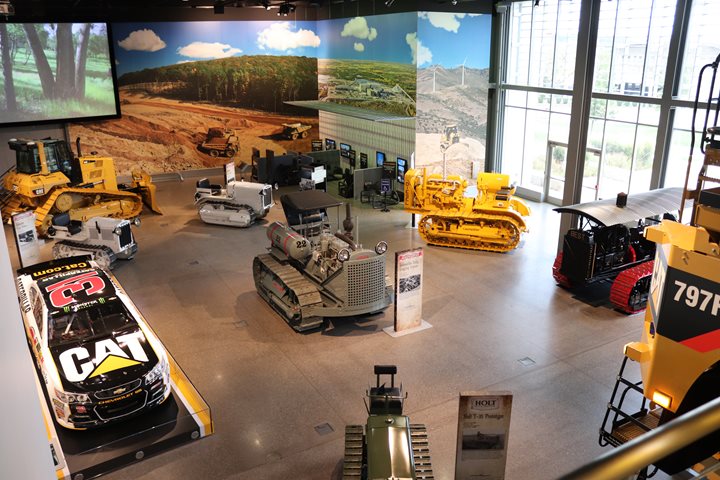
Between June 13, 2017, and June 20, 2018, the
Caterpillar Visitor Center in downtown Peoria, IL displayed a
collection of vintage tractors from the Veercamp Family Collection of
California. On display are the roots of the company, tractors with Holt and Best nameplates. Both companies produced crawler
tractors in the early 20th Century; and were direct competitors. In 1925, the two companies combined, resulting in the new
company named the Caterpillar Tractor Company. Author's photo.
The Mexican Punitive Expedition of
1916-1917: Caterpillar may have one of the
longest histories of providing equipment to the US military than any
company currently still in business. While the Mexican Punitive
Expedition may be better known for the introduction of the airplane and the
automobile for scouting purposes, the expedition was still primarily a
horse cavalry operation. Holt 75 crawler tractors pulled long
wagon trains of hay to feed the horses. This was the first use of crawler tractors for the US military,
and the first for what in 1925 became Caterpillar.
World War One: World War One introduced the crawler tractor
to the US Army
on a mass scale, with 9,771 Holt tractors built by Holt
and under license by five other companies. Not only
did the American forces use them, but England, France, and Russia also
procured by them.
Historical note: During both the
Mexican Punitive Expedition and World War I, the Holt tractor was used in military service
to pull wagons, artillery pieces, and other equipment behind the
tractor. At the time, both Holt and Best were suppliers of
agricultural tractors, which pulled plows or other farm equipment
behind the tractor. It wasn't until the 1930's that Caterpillar
switched from being an agricultural supplier to a construction equipment
supplier when bulldozers were added to the front of tractor.
Best
World War One Tractor Production: A portion of 950
6-ton 1917 tanks. Best Tractor shared production with Van Dorn
Iron Works and Maxwell Motor for a contracted total of 4,440 tanks.
Then they were known as a Special Tractor, with production in
1918-1919. With the end of the war, production ceased at 950.

This 1917 6-ton tank is on display at Miller
Park in Bloomington, IL. It may very well have been built by Best
Tractor. Author's photo added 5-21-2018.
Holt World War One Tractor
Production:
|
Holt World War One Tractor Production |
|
Type |
Number Produced |
|
18 hp tractor |
3 |
|
45 hp tractor |
407 |
|
55 hp tractor |
2,103 |
|
60 hp tractor |
63 |
|
70 hp tractor |
1,810 |
|
120 hp tractor |
676 |
|
Total |
5,062 |
|
Licensed Holt World War One Tractor
Production |
|
Company |
Type |
Number Produced |
|
Chandler Motor Car Company |
10-ton tractor |
700 |
|
Federal Motor Truck Company |
2.5-ton tractor |
87 |
|
Interstate Motor Company |
2.5-ton tractor |
7 |
|
Maxwell Motor Car Company |
6-ton tractors |
225 |
|
Reo Motor Car Company |
5-ton tractor |
1,477 |
|
Total |
|
2,496 |
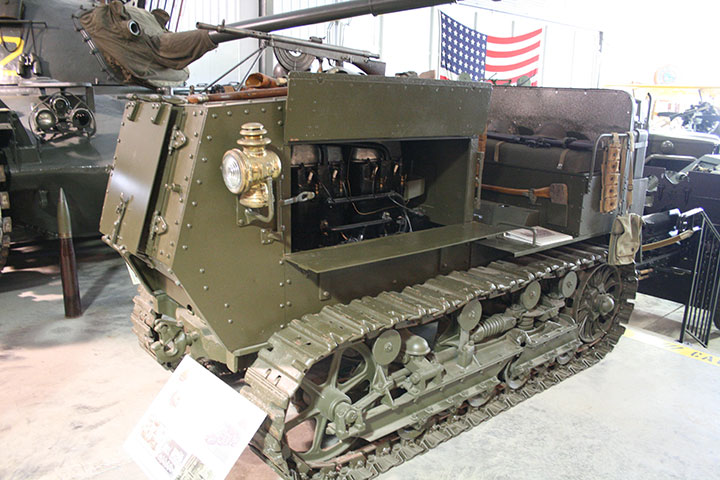
This is a Reo-built Holt five-ton tractor.
The photo was taken at the former Ropkey Armor Museum.
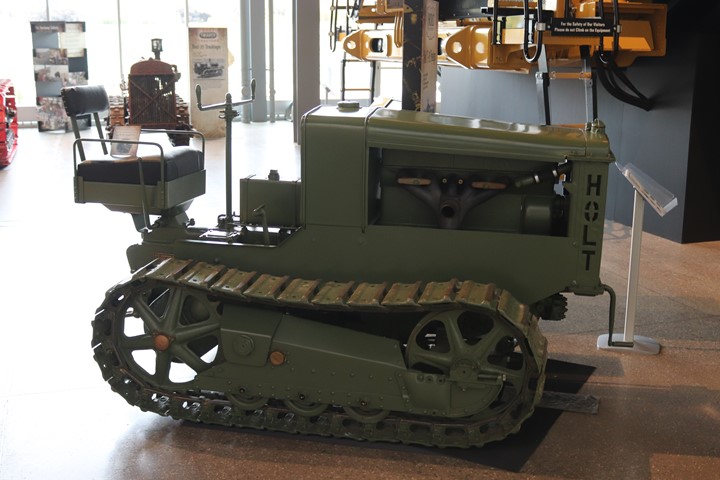
The Holt T-35 was designed during World War
One but
did not begin production until after the war. It was the last tractor
designed by that company before it combined with Best to become
Caterpillar. This is the original prototype unit that is part of
the year-long display at the Caterpillar Visitor Center. When
Caterpillar began business in 1925, this was its first product and in
1928 was
renamed the Caterpillar Ten. Author's photo.
Between the Wars:
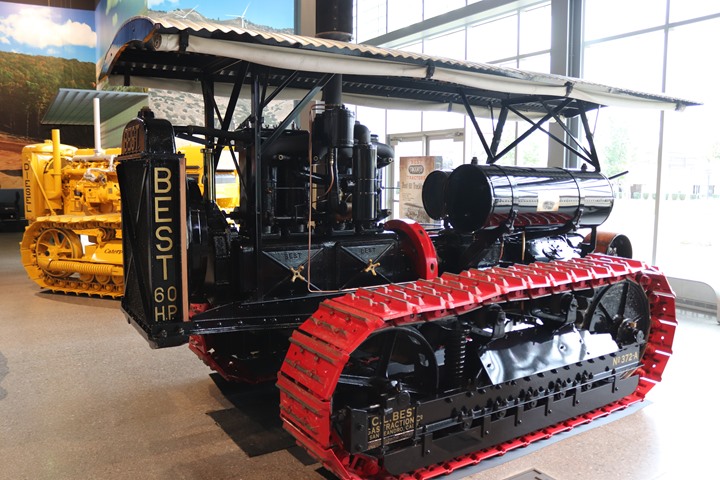
This Best 1919 60 Tracklayer was on display
until June 2018 at the Caterpillar Visitor Center in Peoria, IL.
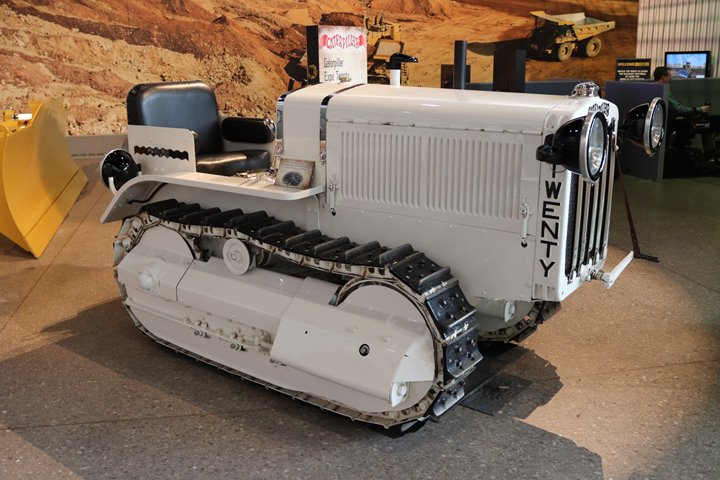
The Caterpillar Twenty was the first new
design of the new Caterpillar Company. This particular unit was
painted white instead of the normal Caterpillar gray; and was used as a sales and marketing tool at farm equipment
expositions and state and county fairs. Author's photo from the
Caterpillar Visitor Center in Peoria, IL.
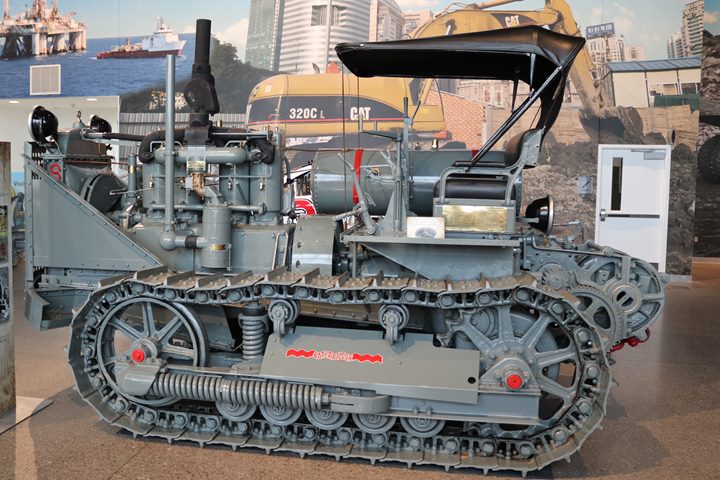
This Caterpillar 60 Logging Cruiser is in
the gray and red trim paint the company was using in 1930.
Author's photo from the Caterpillar Visitor Center in Peoria, IL.
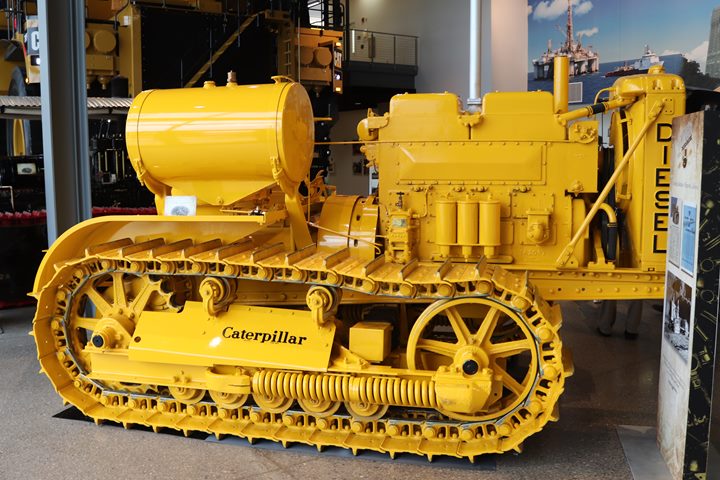
Caterpillar's Million Dollar Baby! All of the tractors previously
produced by Best, Holt, and Caterpillar had gasoline engines. In
the early 1930's, Caterpillar spent one million dollars ($15,892,558 in
2017 dollars) to develop the diesel engine. By 1934 Caterpillar was
the largest producer of diesel engines in the world. This Model 65 was
built in 1932 and was in the new Caterpillar yellow.
The company has revised the shade of yellow several times since 1932.
Today most construction equipment seen along the road, no matter the
manufacturer, is painted some shade of yellow. Author's photo from the
Caterpillar Visitor Center in Peoria, IL.
World War Two:
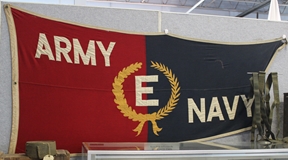
Three Caterpillar plants won the Army-Navy
"E" Award during World War Two a total of seven times.
The East Peoria, IL Plant
won the award on February 13, 1943, and added stars on May 24, 1944,
November 25, 1944, and June 9, 1945. This was Caterpillar's main
plant. The awards were for the timely production of crawler tractors.
The San Leandro, CA plant won the award on February 16, 1945, and added a
star in August 1945. This plant was the original plant operated by
Daniel Best. The plant made 37mm shells during WWII and was the
supplier of diesel fuel injection components for Caterpillar's diesel
engines.
The Caterpillar Military Engine Company, Decatur, IL plant won the award on June 26, 1945.
This plant was originally built to produce RD-1820 diesel tank engines.
In 1944 Decatur converted to D7 production, which was the
product for which the plant won the award.
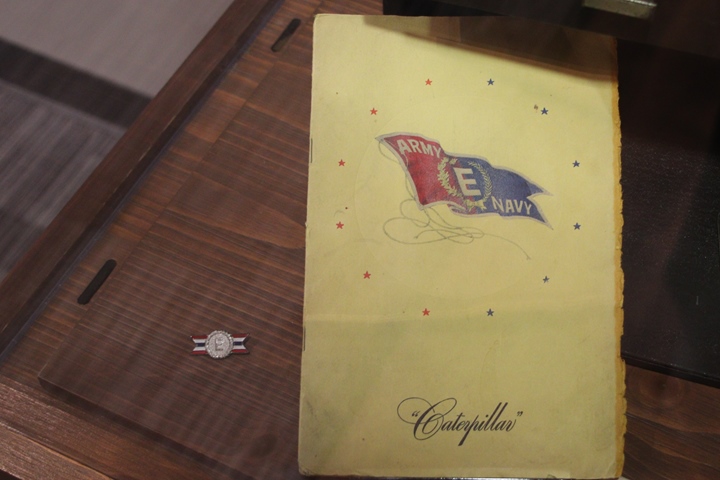
This Army-Navy "E" Award employee program
and employee pin were on display for part of 2019 at the Caterpillar
Visitor Center. Author's photo added 11-4-2019.
Caterpillar had $570,578,000 in major war
contracts during World War Two.
Caterpillar Tractor Company's Major World War Two Contracts
The information below
comes from the "Alphabetical Listing of Major War Supply
Contracts, June 1940 through September 1945." This was
published by the Civilian Production Administration,
Industrial Statistics Division.
Added 3-12-2022. |
|
Caterpillar Division |
Location |
Contract Amount |
|
Caterpillar Military Engine Company |
Decatur, IL |
$465,000 |
|
Caterpillar Tractor Company |
Peoria, IL |
$568,757,000 |
|
Caterpillar Tractor Company |
San Leandro, CA |
$1,356,000 |
|
Total |
|
$570,578,000 |
Caterpillar
World War Two Products: 56,306 crawler
tractors, wheeled tractors, road graders, 37 mm shells, carriages for
155 mm howitzers, M4 series tank transmissions and differentials, 120
RD-1820 radial diesel engines.
Crawler Tractors:
Caterpillar's most important contribution, as noted earlier, was its
production of crawler tractors. It was one of the few companies
that continued its pre-war product during the war. Its only change was to start painting the tractors olive-drab rather than
Caterpillar yellow.
Uses: The
crawler tractor's versatility came from its different attachments.
Equipped with a bulldozer blade, it could push. With a rear
mounted winch, it could pull and tow. With a hoist, it could lift.
By pulling a scraper, it could haul large amounts of dirt, coral, or
rock. It was able to fill bomb holes, push destroyed equipment off
a road, clear rubble in bombed out towns, pull logs out of jungles and
forests that were used to make bridges, knock down trees, build
approaches to rivers for pontoon bridges, clear jungles and forests for
airstrips, warehouses, tank farms, and barracks. It was the
construction equipment's World War Two equivalent of the Swiss
army knife.
The Army Engineer Aviation Battalions Table of Organization and
Equipment showed the following equipment list for tractors as of
November 1942 consisted of:
Tractors:
Diesel, D-4, w/dozer (3)
Diesel, D-4, w/dozer & trailer (3)
Diesel, D-7, w/dozer (3) Later in the war
another D-7 was added for a total of (4)
Diesel, D-8, w/dozer (1)
Also listed is a:
Shovel:
Gasoline, 1/2 cu. yd. (3)
push w/D-4 tractor (3)
Apparently, the shovels were not able to move on their own power.
Interestingly, the tractors are being identified by their Caterpillar
trade name, rather than their military nomenclature.
The D4 was a "Tractor, Light, M1," the D6 was a "Tractor, Medium, M1,",
and a D7 was a "Tractor, Heavy, M1." There was no military
designation for the D2 or D8.
The US Navy Construction Battalions, or
Seabees, in the Pacific built 400 varying types of naval bases during
World War Two. They also built 100 airstrips, 235,000 miles of roads, 700 acres
of warehouses, housing for 1.5 million men, and storage tanks for 100
million gallons of gasoline. Each Seabee Battalion was issued
eight Caterpillar D8 tractors, which was one of the main tools to help
them accomplish these huge achievements in just over three
years. Each Seabee Battalion
also had four D7s, four D6s, and two D4s.
Caterpillar World War Two Tractor Production (Courtesy of
Caterpillar Archives)
Notes: In April 1942
the War Production Board assigned 85% of crawler for military,
which included Lend Lease, most of which went to Britain.
With the war production being stopped no later than the end of
September 1945, a certain percentage of 1945's numbers include
civilian output. |
| |
1942 |
1943 |
1944 |
1945 |
Totals |
|
| D2 |
1,556 |
0 |
1,192 |
1,247 |
3,995 |
D2 |
| D4 |
2,456 |
3,305 |
4,918 |
5,299 |
15,978 |
D4 |
| D6 |
1,326 |
1,165 |
1,822 |
1,802 |
6,115 |
D6 |
| D7 |
1,878 |
2,255 |
7,885 |
8,485 |
20,503 |
D7 |
| D8 |
2,390 |
2,338 |
2,376 |
2,611 |
9,715 |
D8 |
|
Yearly totals |
9,606 |
9,063 |
18,193 |
19,444 |
56,306 |
Grand Total |
Author's note: Early Caterpillar
tractors did not have electric cranking motors for starting the diesel
engines. Instead, they came equipped with a two-cylinder gasoline
starting engine which was started by a pull rope or hand-crank.
The smaller D2s and D4s used pull ropes, while the larger D6s, D7s, and
D8s used the hand-crank. Once the gasoline engine was started, it
would then engage the diesel engine to start it. The gasoline
starting engines were known as pony motors. The use of the pony
motors carried on with the Caterpillar tractors sold to the US military
during WWII and into post war units. This allowed the tractor to
be started anywhere as long as gasoline was available to start the pony
motor. With the tractors working around the world in all sorts of
environments, there was no need to worry whether the battery was
dead and couldn't start the tractor. Also, the pony motor would
pre-warm the diesel in cold environments where diesels are hard to
start. Only the
strong arm of a soldier or sailor was needed to pull-start or hand-crank the pony
motor. If the pony motor was well maintained and adjusted
properly, it would start with one rope pull or one turn of the hand-crank.
|
D7 Production During World War Two
From "U.S. WWII Caterpillar D7 Track-Type Tractor"
published by Tankograd Publishing 2011.
Added 3-12-2022. |
|
Model/Series |
Year |
Number Built |
Serial Numbers |
Comments |
|
D7/7M |
1940-1944 |
9,999 |
7M1 - 7M999 |
|
|
D7(Armored)/1T |
1943 |
138 |
1T1001 - 1T1138 |
For British Army. |
|
D7/3T |
1944-1945 |
3,418 |
3T1 - 3T3418 |
|
|
D7(Military)/4T |
1944-1945 |
9,999 |
4T1 - 4T9999 |
These were built by American Car and Foundry in Berwick, PA.
|
|
D7/6T |
1945 |
1,054 |
6T1 - 6T1054 |
For U.S. Navy. |
|
Total |
|
24,608 |
|
|
Caterpillar started a new series of tractors
when the serial numbers reached 9999.
Caterpillar Tractors
Accepted by Detroit Ordnance, US Army
The information below comes from "Summary Report of
Acceptances, Tank-Automotive Material, 1940-1945."
Published by Army Services Forces, Office, Chief of
Ordnance-Detroit, Production Division, Requirements and
Progress BranchJanuary 21, 1946.
Added 11-4-2019. |
|
Type |
Same as |
1940 |
1941 |
1942 |
1943 |
1944 |
1945 |
Total |
| Light, M2 |
Cleveland Tractor
, IH
TD9 |
11 |
|
|
|
* |
* |
11 |
| Light, D2 |
|
|
|
255 |
|
* |
* |
255 |
| Light, D4 |
|
|
15 |
348 |
7 |
* |
* |
370 |
| Medium, M1 (D6) |
Cleveland
Tractor M1, IH
TD14 |
40 |
|
207 |
206 |
* |
* |
453 |
| Medium,
Winterized, (D6) |
Allis Chalmers |
|
2 |
54 |
309 |
* |
* |
365 |
| Heavy, M1 (D7) |
IH TD-18 |
72 |
|
106 |
195 |
* |
* |
373 |
| Heavy, D8 |
Pacific Telephone |
|
|
99 |
1 |
* |
* |
100 |
| Tractor Crane,
Medium, M3 |
IH |
|
|
|
1 |
* |
* |
1 |
| Tractor Crane,
Heavy, M4 |
IH |
|
|
106 |
291 |
* |
* |
397 |
| Totals |
|
123 |
17 |
1,175 |
1,010 |
* |
* |
2,325 |
Author's Note
and Disclaimer: The Detroit Office
of Ordnance of the U.S. Army was the primary purchasing entity for
vehicles for the U.S. Army during World War Two. It also purchased vehicles
for the USMC, US Navy, and for Lend-Lease. However, there were
other organizations that also purchased vehicles including the Army
Corps of Engineers, U.S. Army Air Force, U.S. Army Signal Corps, Navy
Bureau of Ordnance, Navy Bureau of Aeronautics, and foreign countries
making direct purchases.
*Starting in 1944, the Army Corps of Engineers
became responsible for the purchase of low speed tractors which, until
then, had been
the domain of Army Ordnance. Therefore, the totals for
these types of tractors are incomplete. At the same time, as noted above,
other branches of the U.S. military were also making their own purchases, making
the totals even more inaccurate.
Note the differences between the two above
tables, indicating other parts of the U.S. Army and the U.S. Navy were
also purchasing tractors. Trying to determine how many units a
company built for World War Two can be a challenge.
D2: D3400 Diesel Engine with 25.5
hp
Photos below are of a Caterpillar D2 that
served with the US Navy at its Dahlgren, VA proving ground. Photos
were taken at the 2018 World War Two Weekend at Reading, PA.
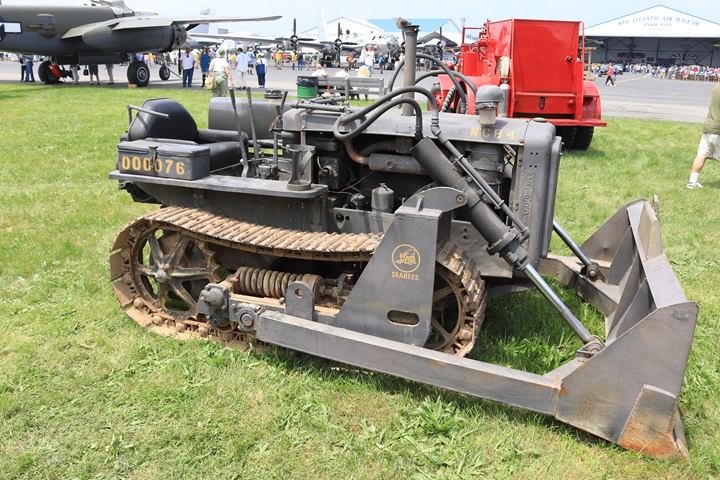
The former Naval Proving Ground D2 has been
repainted to represent a D2 used by the Seabees. According to the
information above, the Seabees did not use the D2 in their normal combat
construction battalions. Author's photo added 6-19-2018.
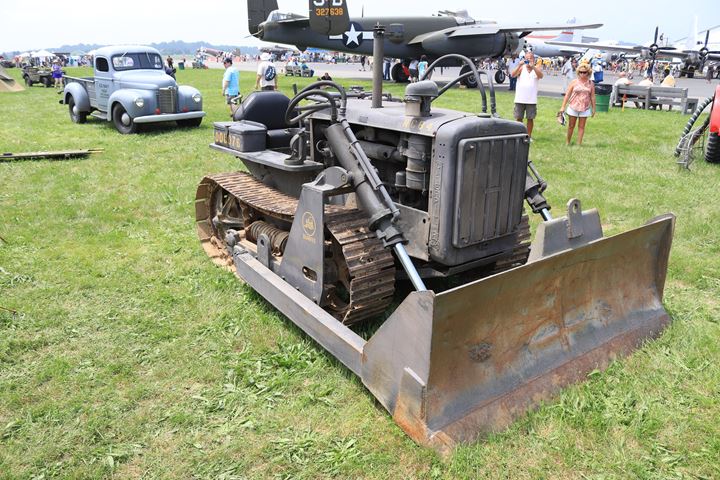
Author's photo added 6-19-2018.
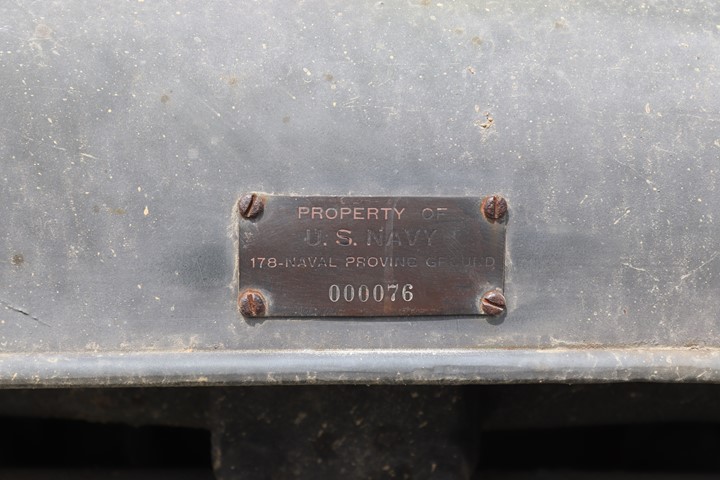
The brass tag on the D2 from the Naval
Proving Ground shows it was serial
number 76. Author's photo added 6-19-2018.

Author's photo added 6-19-2018.
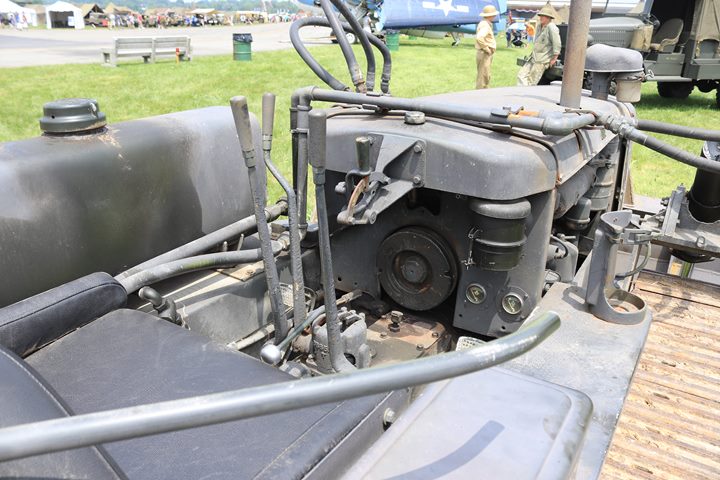
The rope pull-starter for the two-cylinder
gasoline pony motor can be plainly seen. Author's photo added 6-19-2018.
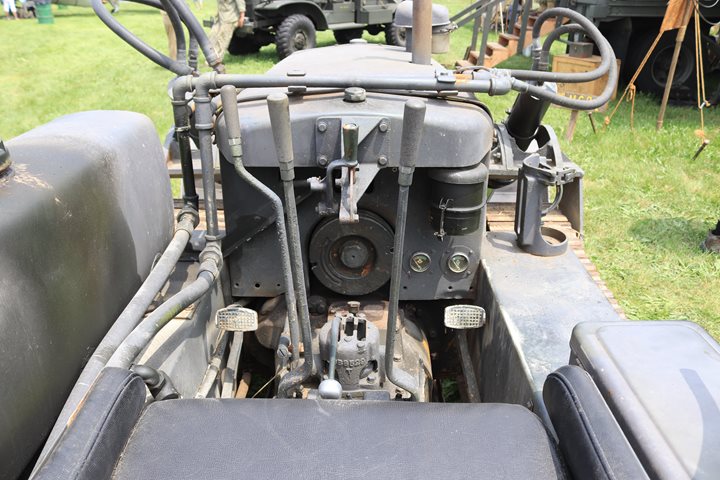
Author's photo added 6-19-2018.
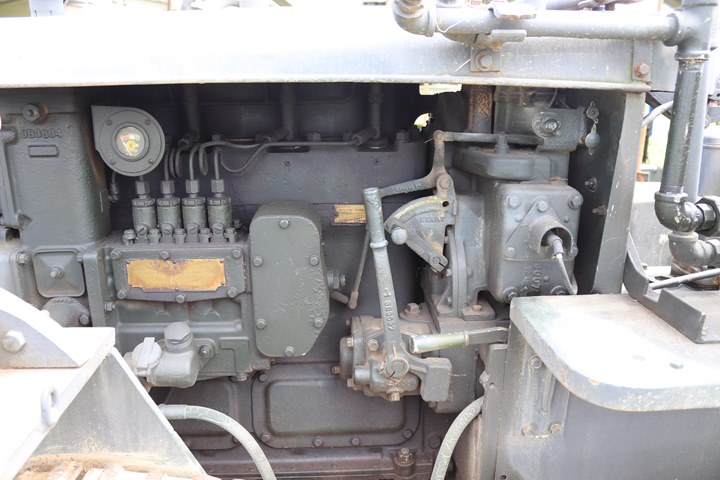
Looking at the left side of the engine, the controls for the pony
starting motor are visible along with its left side spark plug and spark plug wire. Author's photo added
6-19-2018.
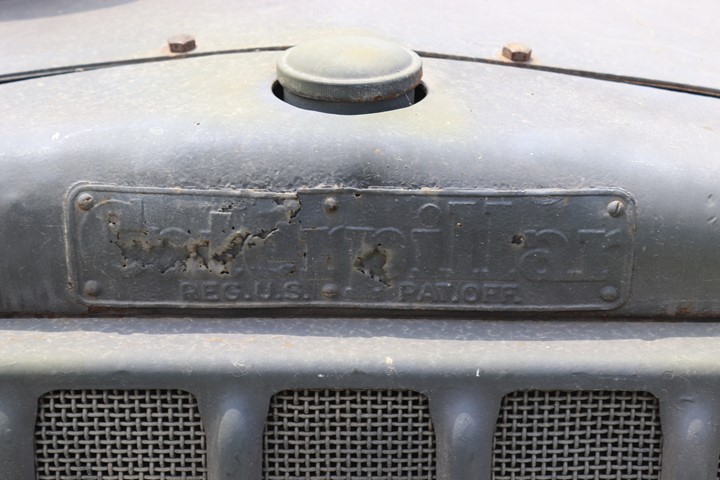
Author's photo added 6-19-2018.
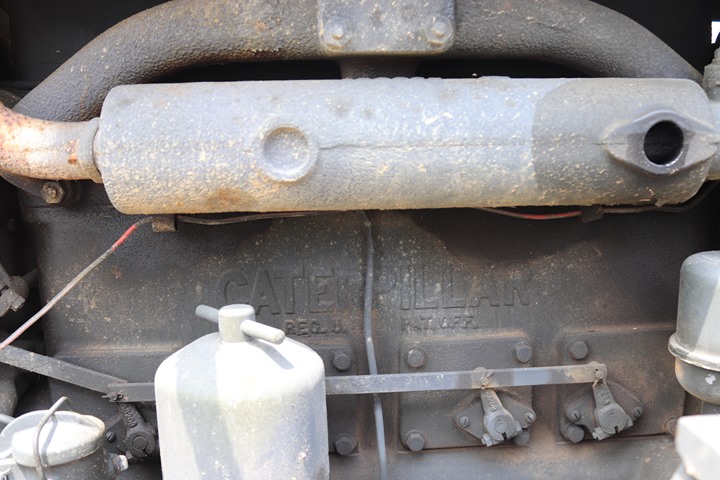
Author's photo added 6-19-2018.
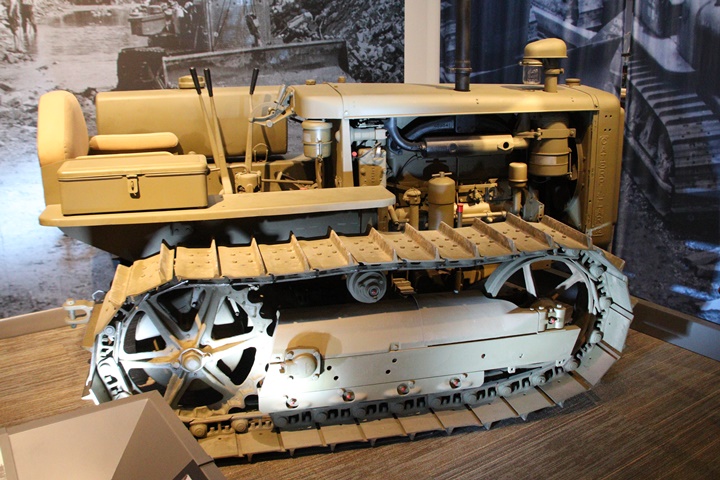
This Caterpillar D2 is on display at the
National Museum of Military Vehicles in Dubois, WY. Author's photo
added 2-3-2025.
D4: D4400 Four Cylinder Diesel
Engine
Both of the Caterpillar D4s shown in this section are on display at Fort
Leonard Wood, MO. The first one is on Iowa Avenue in front of the
First Engineering Brigade Headquarters building. The second D4 is
part of a diorama inside the Combat Engineer's Museum complex at Fort
Leonard Wood. US Army engineers utilized the D4 extensively during
World War Two.
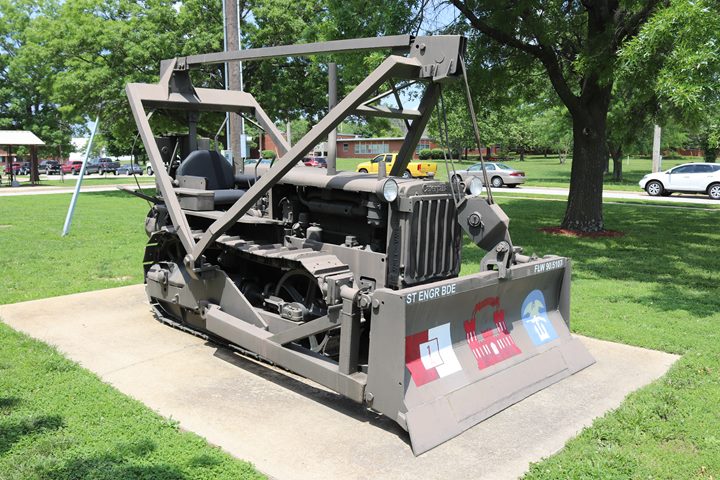
This D4 was built by Caterpillar in 1945 and
is serial number 2T7307SP. Author's photo added 6-19-2018.
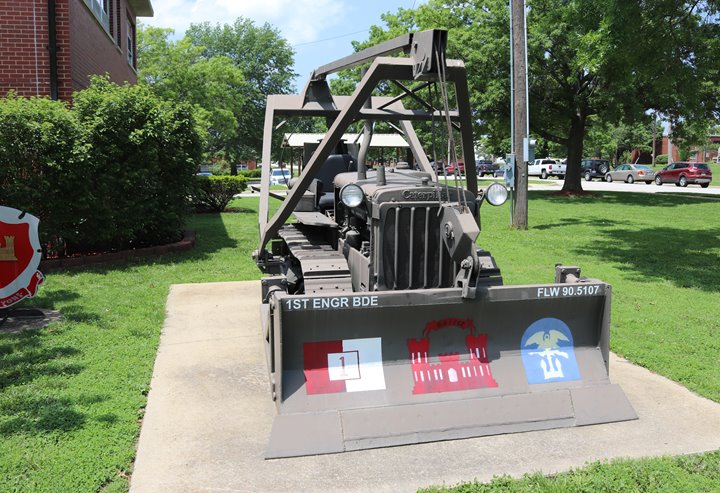
This D4 is equipped with headlights for
night operation. Author's photo added 6-19-2018.
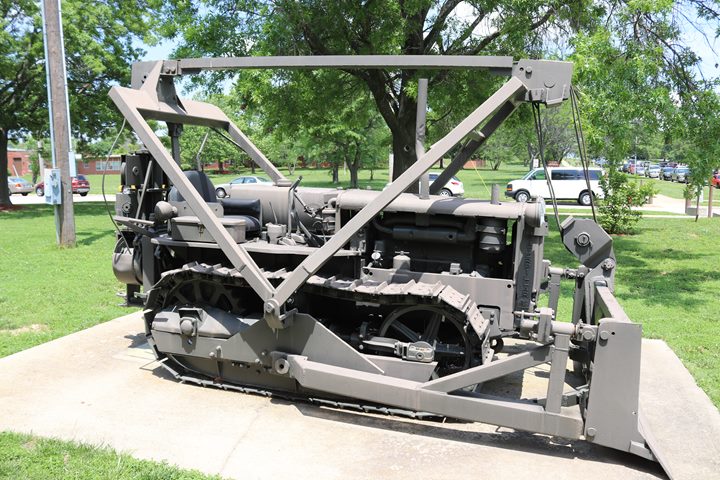
Author's photo added 6-19-2018.
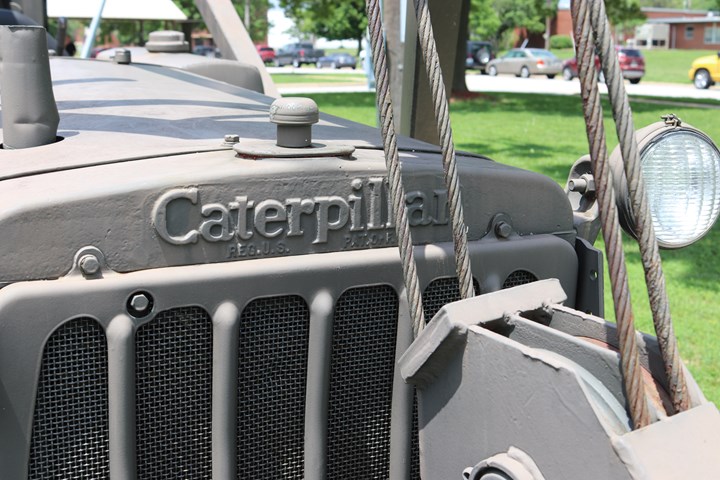
Author's photo added 6-19-2018.

The generator for the headlights is at the
front of the engine. At the rear of the engine, one of the two
spark plugs and spark plug wires can be seen on the pony starting motor. Author's photo added
6-19-2018.
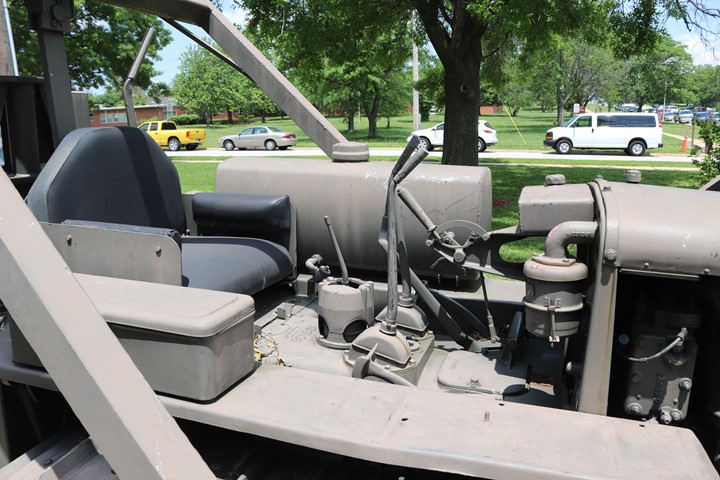
Author's photo added 6-19-2018.
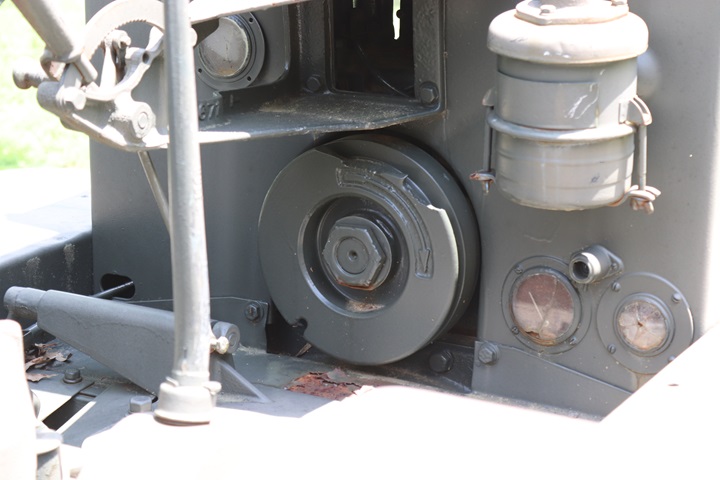
The pull rope pulley for starting the
gasoline pony motor can be seen here. Author's photo added 6-19-2018.
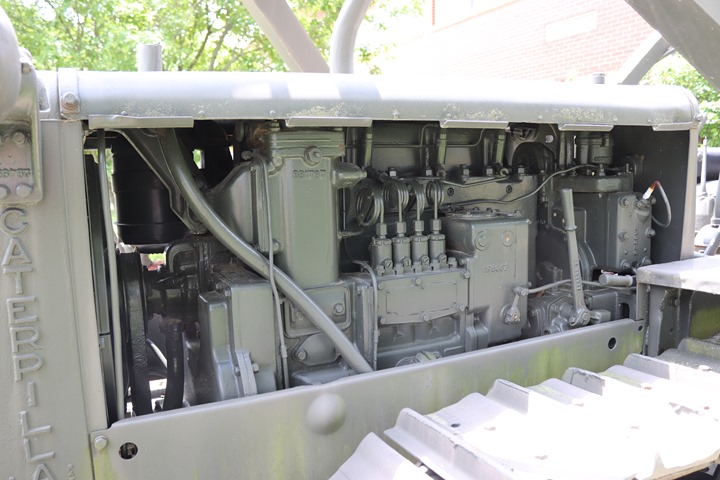
The four fuel injectors and the pony motor
at the rear of the diesel can be seen. Author's photo added 6-19-2018.
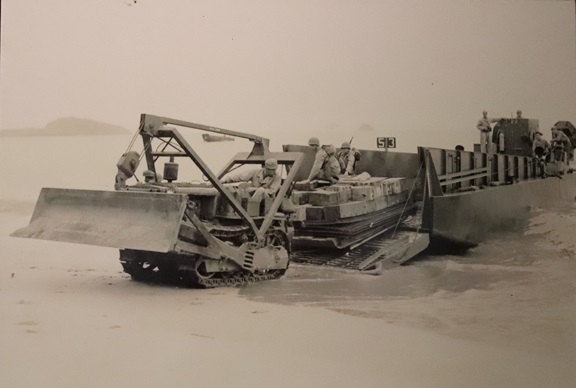
A Caterpillar D4 is seen pulling a load off
of a Landing Craft, Medium, during a practice landing in the Pacific
Theater. This D4 does not have headlights for night operation.
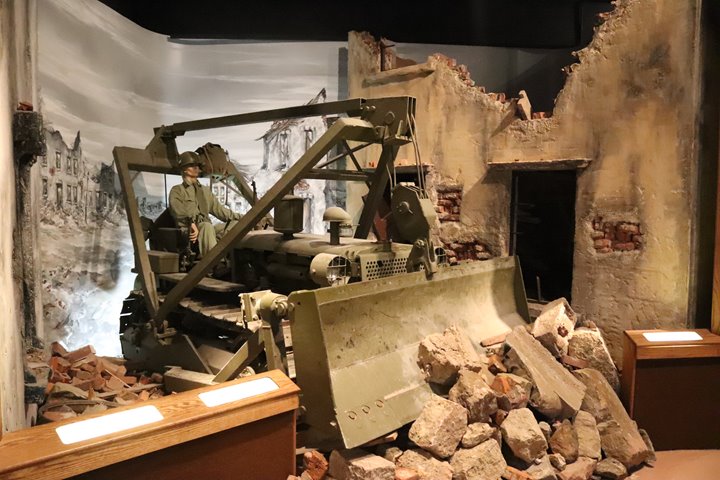
The diorama inside the Combat Engineer's
Museum at Fort Leonard Wood depicts this Caterpillar D4 moving rubble
out of the street. Author's photo added 6-19-2018.
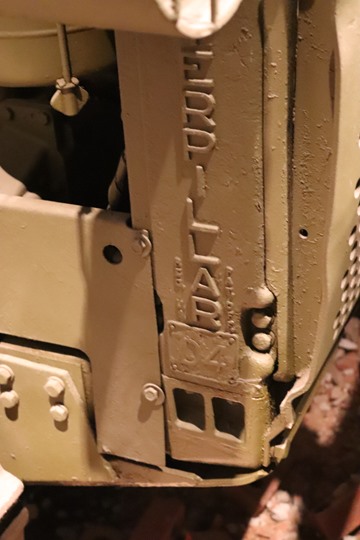
Author's photo added 6-19-2018.
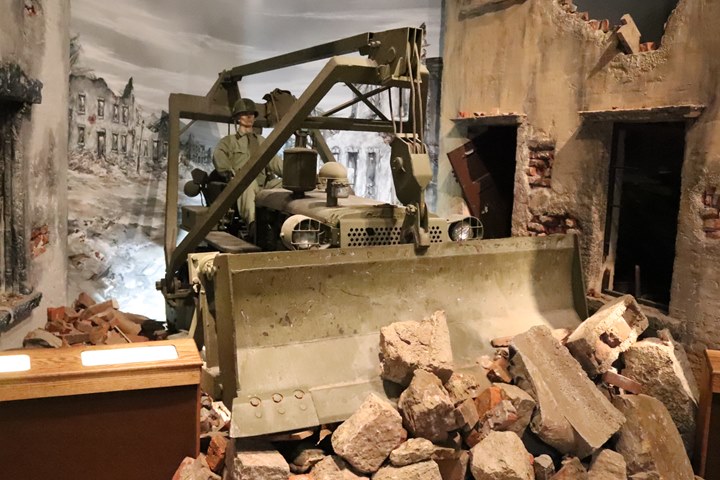
The headlights on this D4 have brush guards
on them. Author's photo added 6-19-2018.
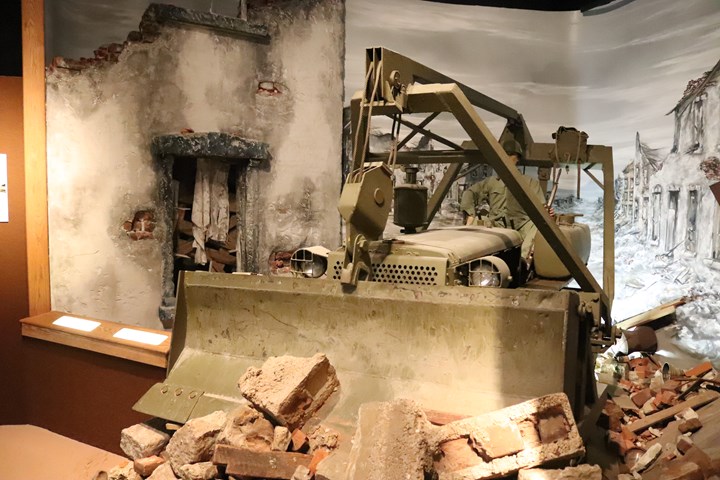
Author's photo added 6-19-2018.

This military D-4 was on display at the 2023
TBM Reunion and Salute to Veterans. Several times during the day
the owner used the gasoline-powered pony engine to start the diesel and
then drove it around the airshow site. Author's photo added
6-20-2023.
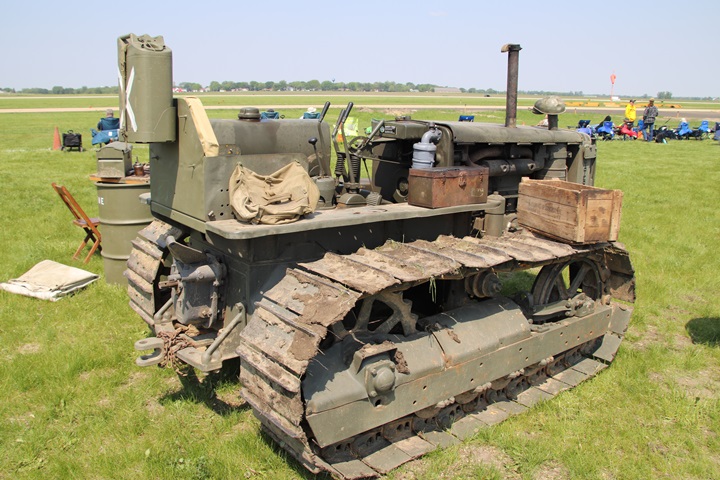
The TBM Reunion takes place at the Peru, IL
airport. This D4 was photographed 52 miles from where it was built
in Peoria, IL. Author's photo added 6-20-2023.
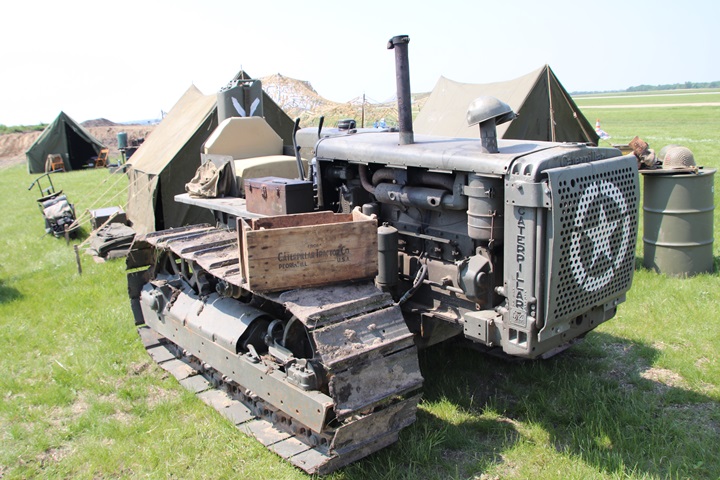
Author's photo added 6-20-2023.
R4: In theory, the U.S. Army did
not have any R4 gasoline Caterpillar tractors, nor did Caterpillar
produce any for the U.S. Army. Research by Jeff Rowsam has found
otherwise. Below is one of several photos he found of a Cat R4
in use by the U.S. Army during World War Two. In this case, the R4 is
clearing ash from the eruption of the Mt. Vesuvius volcano in Italy.
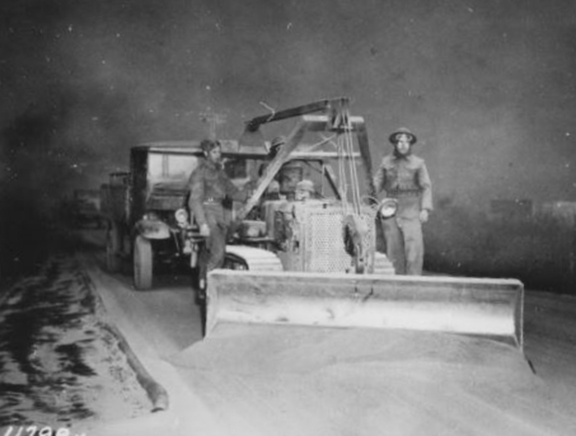
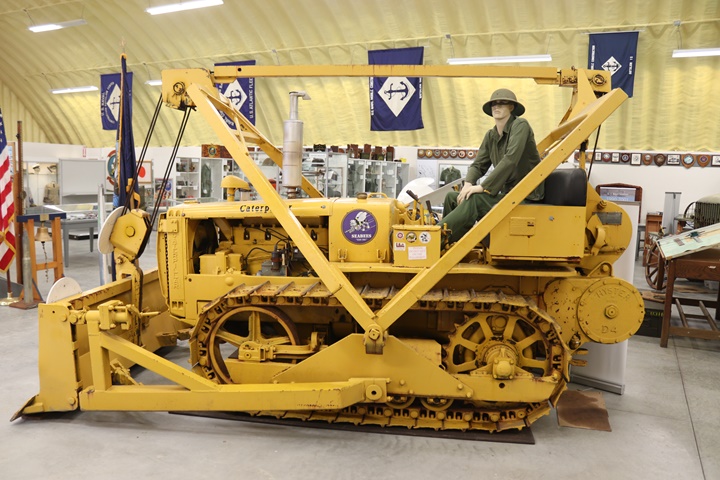
This 1944 R4 is on display at
the Seabee Museum in Davisville, RI. It was built on 1-15-1944 and
has a serial number of 604986. While the Seabees had two D4s per
battalion, it is unlikely that they would have been issued gasoline
powered R4's when the rest of their tractors were diesel powered.
Caterpillar records don't show any R4's being built for the military
during World War Two, and limited Army Ordnance records don't have any
R4's included either. However, photos like the one above show that
the R4 was used by the U.S. Army. The
bulldozer blade is a LeTourneau Tiltdozer Model M. Author's photo added 11-4-2019.
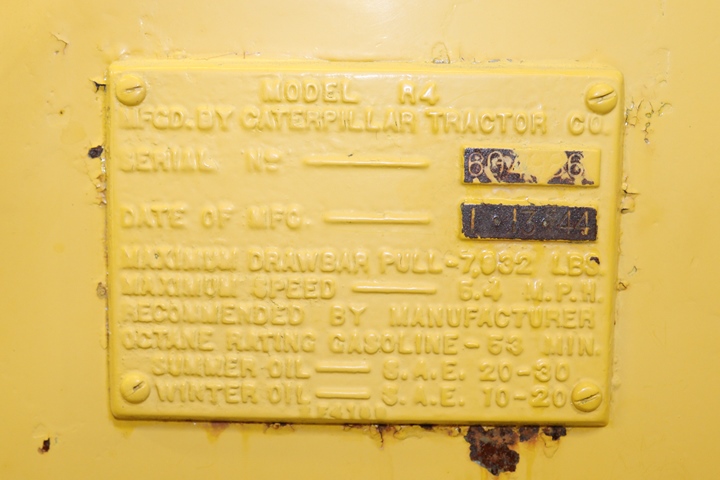
Author's photo added 11-4-2019.
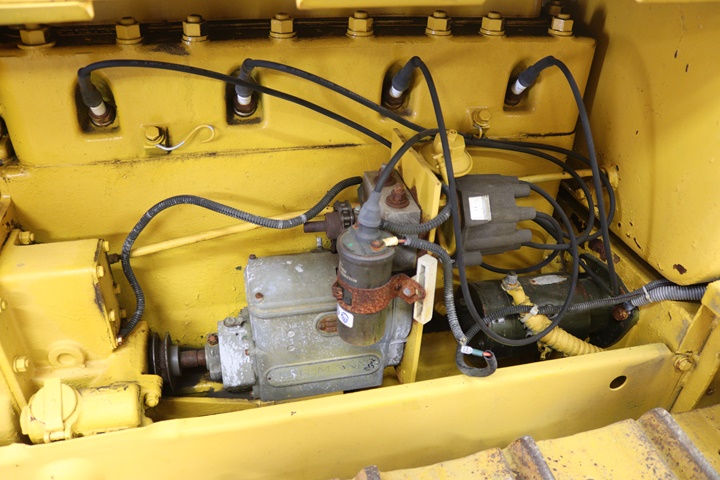
Author's photo added 11-4-2019.
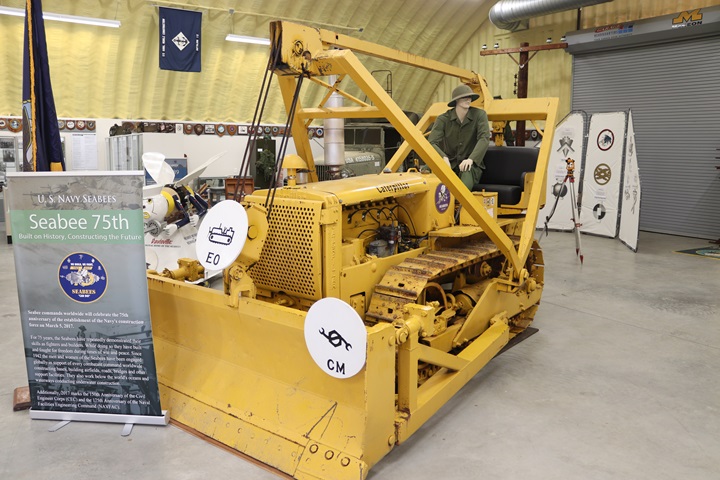
Author's photo added 11-4-2019.
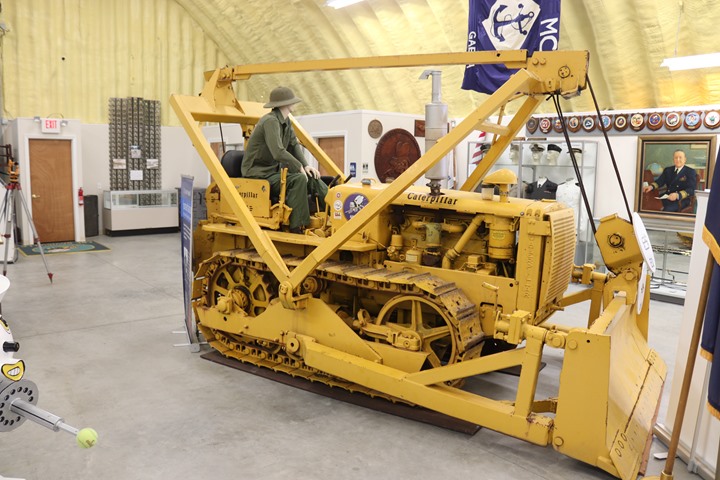
Author's photo added 11-4-2019.
D6: A total of 453 D6
tractors were modified in 1942-1943 as D6 High Speed Tractors, M1.
The modification allowed the D6 to function as a prime mover for
artillery. It could travel at 11 mph after
changes to the engine governor and the gears in the transmission.

This post-WWII era Caterpillar D6 is on display
at the U.S. Veterans Memorial Museum in Huntsville, AL. It
originally served with the US Army at the nearby Redstone Arsenal.
When retired, it was transferred to the Naval Mobile Construction Battalion
(Seabees) located at Redstone. It served as a static display with
the Seabees until the unit was deactivated in 2013. Author's photo
added 3-22-2018.
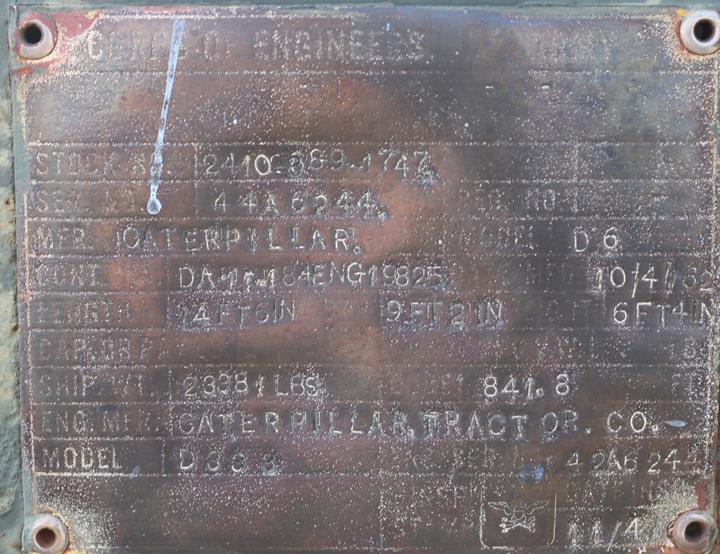
This Caterpillar D6 was delivered to the US
Army Corps of Engineers on October 4,1962. Author's photo added
3-22-2018.
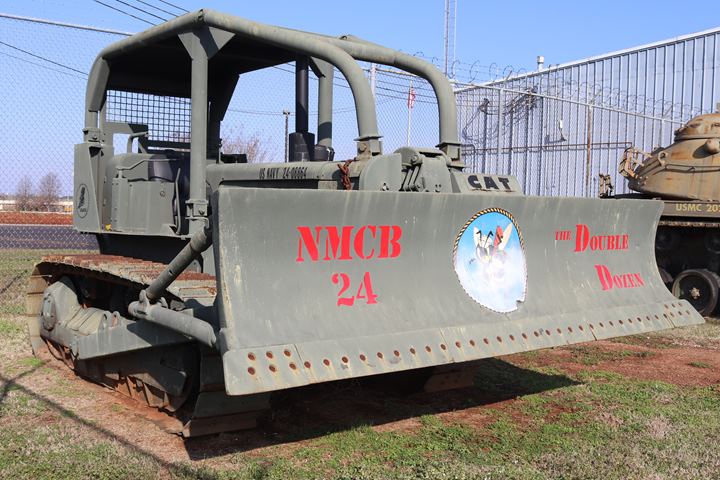
During World War Two each Seabee Battalion
was equipped with four D6 tractors. Author's photo added
3-22-2018.
D7: D8800
engine 69 drawbar hp and 82 belt hp.
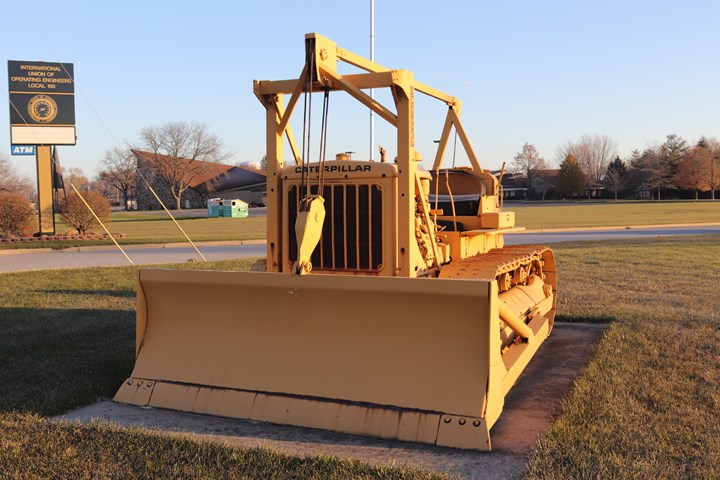
The D7 in front of the Local 150 of the IUOE
in Merrillville, IN is equipped with a LeTourneau straight dozer.
During World War Two, a large percentage of the Caterpillar tractors were fitted with LeTourneau
bulldozers. After being produced in Caterpillar's East Peoria
plant, the tractors were transported across the Illinois River to the
LeTorneau plant in Peoria, IL for outfitting with either a straight dozer,
like the one installed on this D7, or an angle dozer. The
bulldozer on this D7 is a straight blade and cannot be angled.
The LeTourneau designation for this type of dozer is WEK7. The
designation for an
angle dozer was WCK7. The vintage
of both the tractor and dozer are unknown, but both were probably built
during or right after the war, because in 1946 Caterpillar began making
and installing its own bulldozers on its tractors. Author's photo.
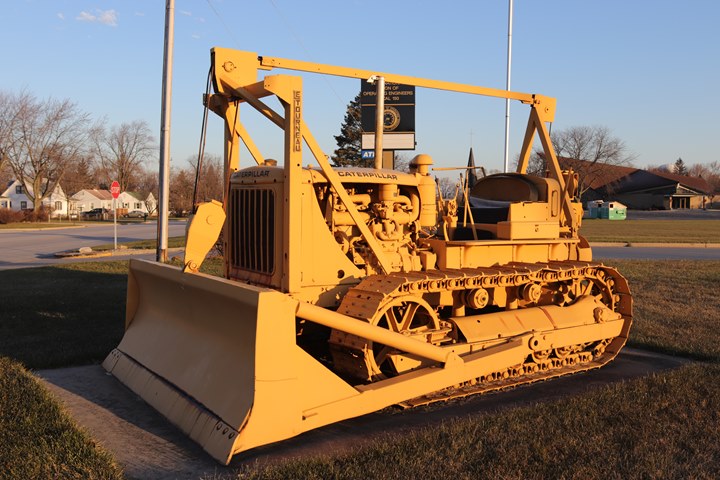
The overhead steel bar that carried
the control cables from the rear control unit to the bulldozer was
called the "headache bar" by the servicemen that operated the tractors.
During operations where bulldozer equipped tractors were pushing over
coconut or other large trees in the Pacific, the "headache bar" offered
the operator some protection when the tree fell back on the tractor. Author's photo.
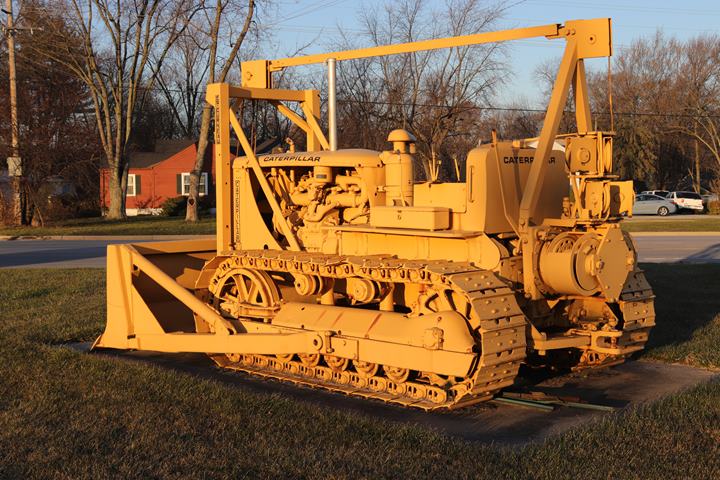
Mounted on the rear of the D7 is a LeTourneau
R-7 power control with a double sheave assembly. Author's photo.

This 1942 Caterpillar D7 is on display at
the Seabee Museum in Davisville, RI. Author's photo added
11-4-2019.
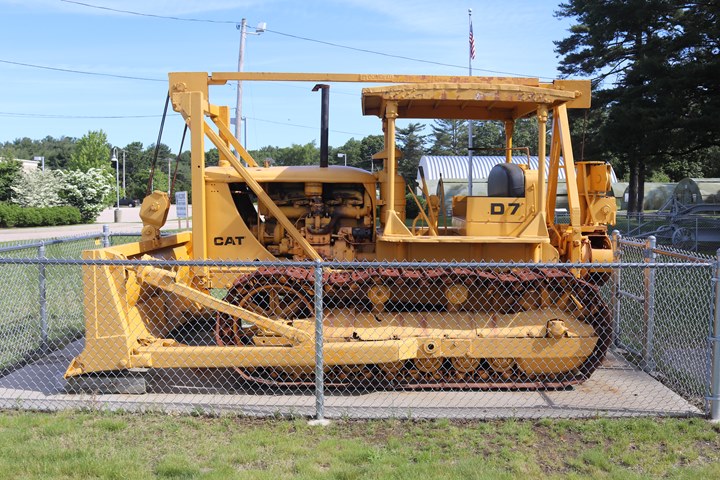
Author's photo added 11-4-2019.
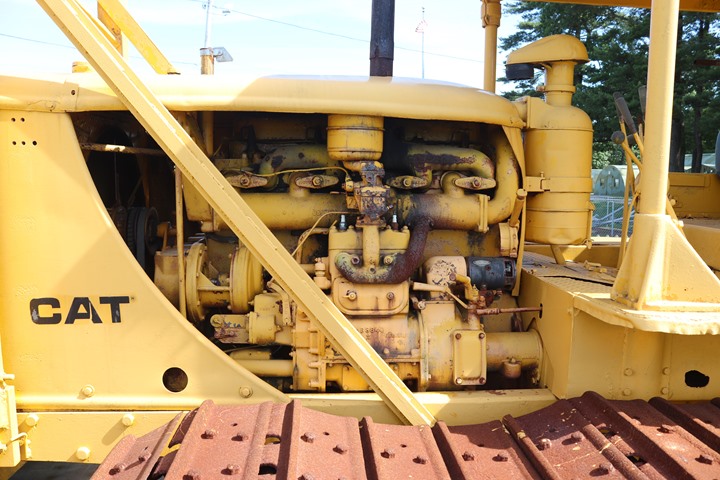
Author's photo added 11-4-2019.
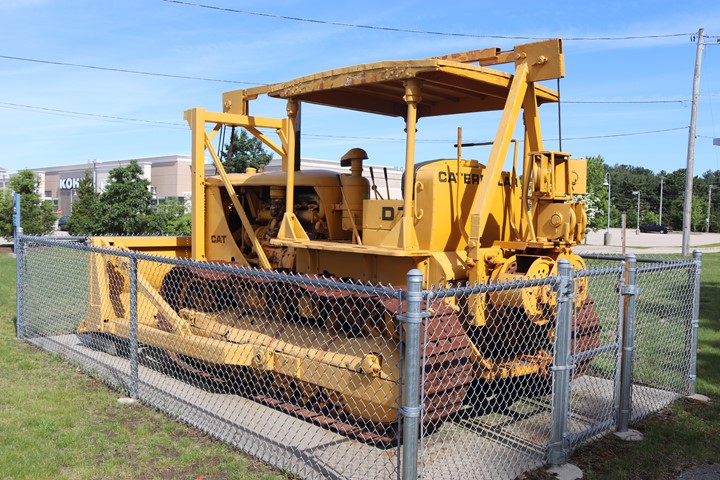
Author's photo added 11-4-2019.

Author's photo added 11-4-2019.
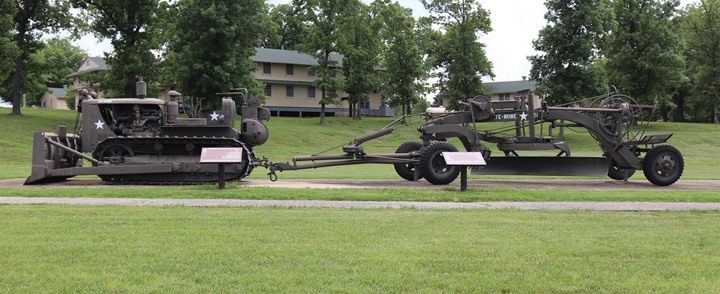
This 1951 Caterpillar D7 is on outdoor
display at Fort Leonard Wood, MO. It is shown pulling a J.D. Adams
towed leaning wheel road grader. Author's photo added 6-19-2018.

Author's photo added 6-19-2018.

On the larger Caterpillar tractors like this
D7, the pony starting motor was on the left side of the engine with the
controls towards the rear. The shaft coming down from the engine
cover toward the front of the engine is part of the starting system for
the pony motor. The operator would get up the left track and
insert the crank handle into the shaft through a hole in the engine
cover. The right-angle connection rotated the crank shaft of the
pony motor. The spark plugs and wires are visible on top of the
pony motor. Author's photo added 6-19-2018.
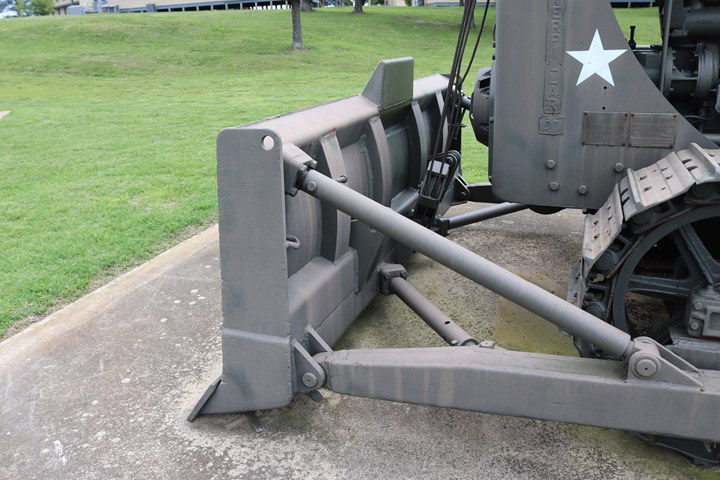
Author's photo added 6-19-2018.
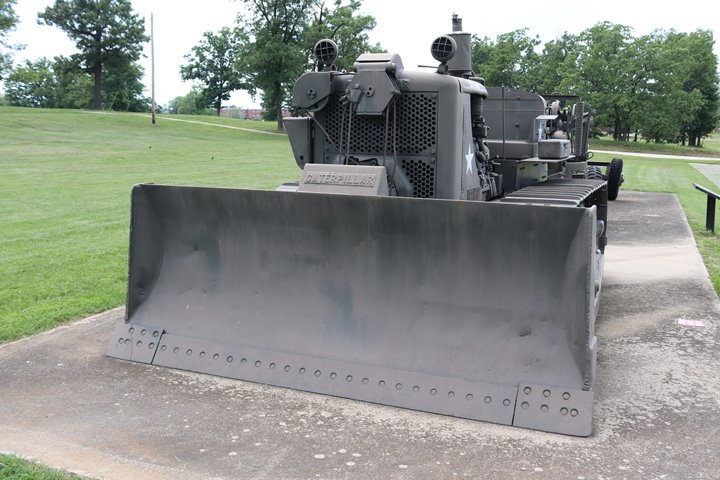
The post-World War Two D7 series featured
Caterpillar's own dozer attachments with the Caterpillar logo.
This one is a straight or "S" configuration. Caterpillar also
produced the front mounted No. 24 cable control. The D7 has headlights with brush guards. Author's photo added
6-19-2018.
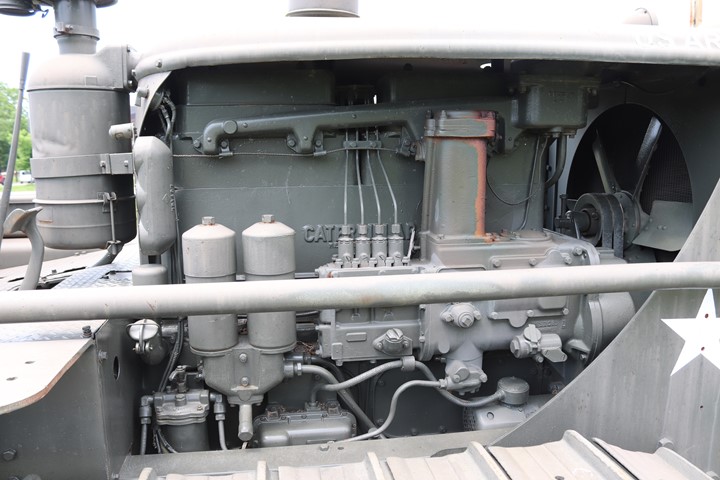
This shows the right side of the engine on
the D7. Author's photo added 6-19-2018.
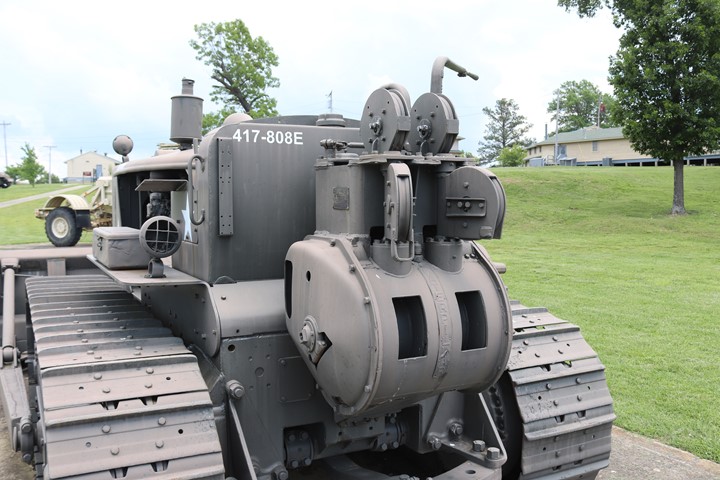
This tractor has a post-World War Two
Caterpillar No. 25 double drum rear cable control. Author's photo added 6-19-2018.

The serial number for this D7 is 3T 19549 and
has a date of 6-28-1951. Author's photo added 6-19-2018.
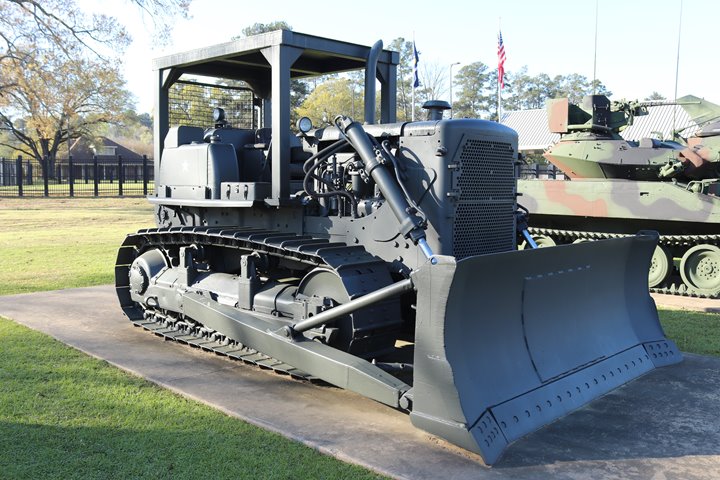
This Caterpillar D7E is on display at the Louisiana National Camp
Beauregard Museum in Pineville, LA. Author's photo added 3-22-2018.
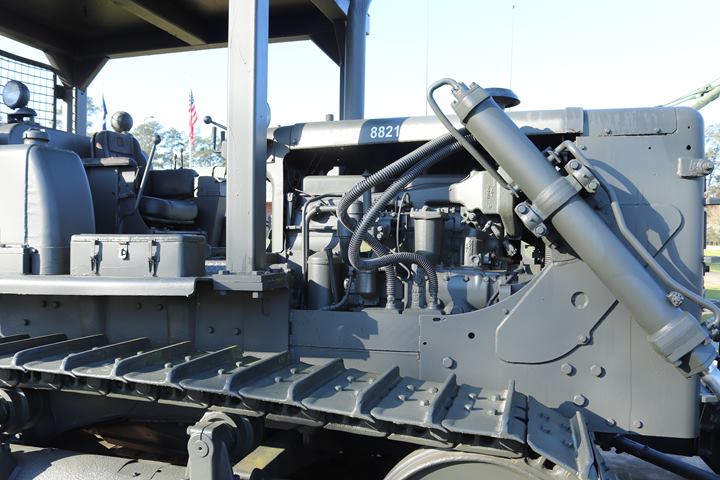
The D7E features a long stroke, low
RPM, four-cylinder, turbo-charged engine. This produces a very
distinct sound when it runs. This unit has a power shift
transmission and standard hydraulics. Author's photo added 3-22-2018.
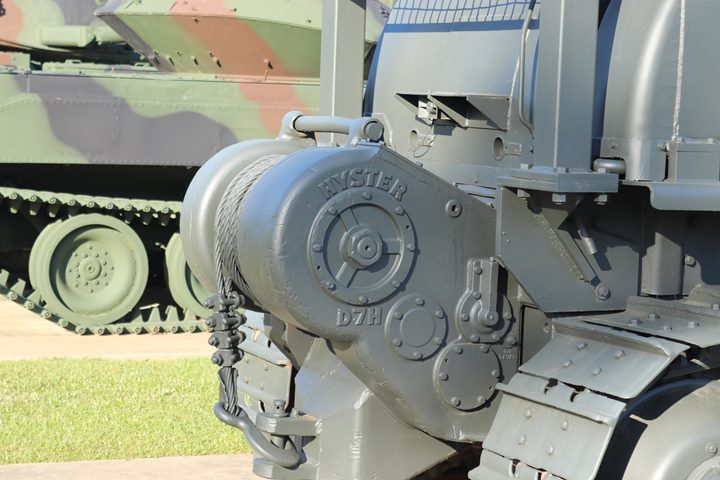
Caterpillar does not offer a heavy
duty drag winch. The Hyster Company supplied the winches for the
Caterpillar D7 line of tractors. The D7H is not the Caterpillar
tractor model but the Hyster winch model number. There was no
Caterpillar D7H in this configuration. Author's photo added 3-22-2018.
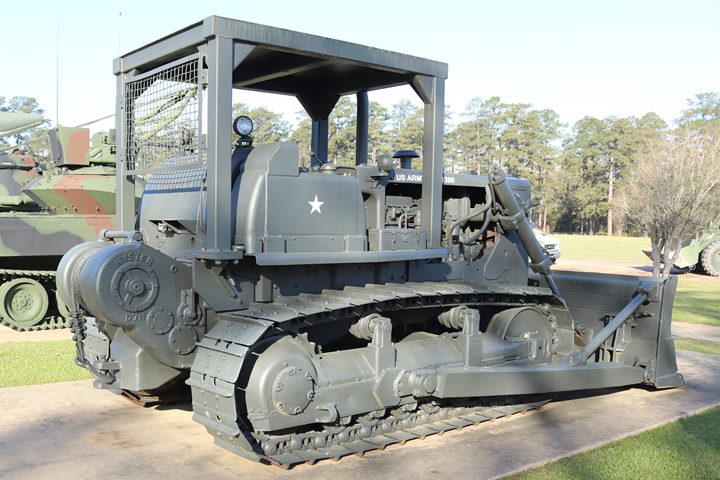
The Roll Over Protection Structure or ROPS canopy was a post-production
addition. Most tractors supplied to the military did not have the
ROPS when first issued. Author's photo added 3-22-2018.
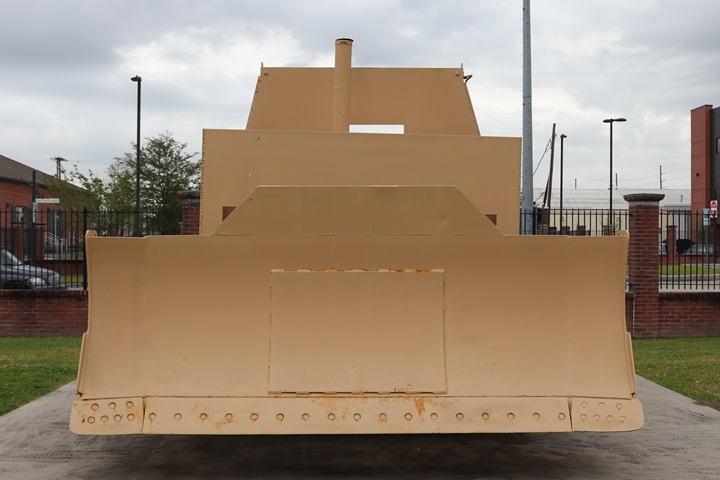
This post-World War Two armored D7F is on display at
the Louisiana National Guard Museum at the Jackson Barracks in New
Orleans. Author's photo added 3-22-2018.
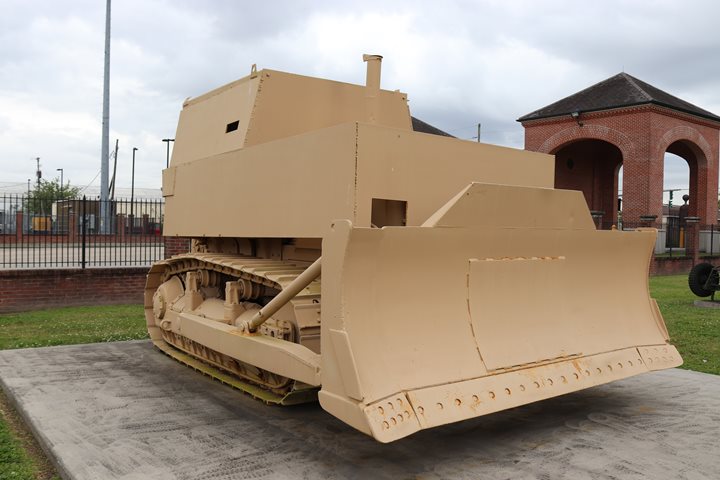
It was used by Company B, 527th Engineering
Battalion of the Louisiana Army National Guard in Desert Storm.
Author's photo added 3-22-2018.
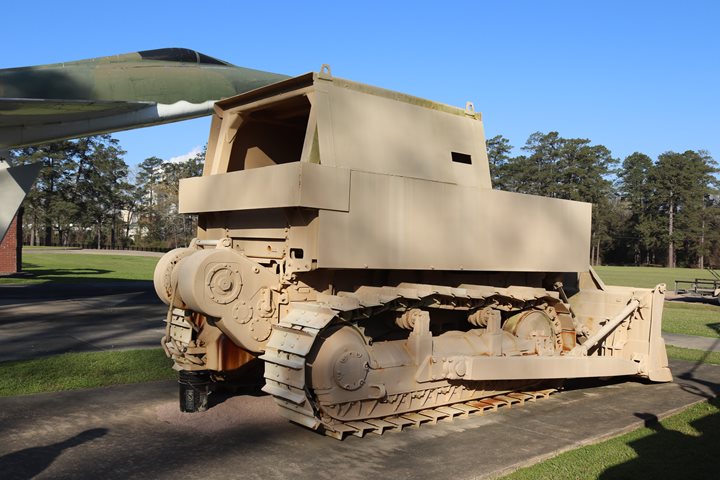
The Louisiana National Guard has an
armored D7E on display at Camp Beauregard in Pineville, LA.
Author's photo added 3-22-2018.
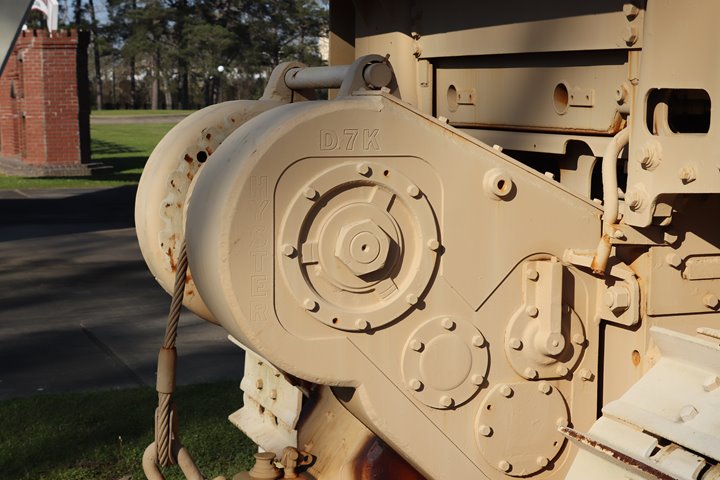
Author's photo added 3-22-2018.
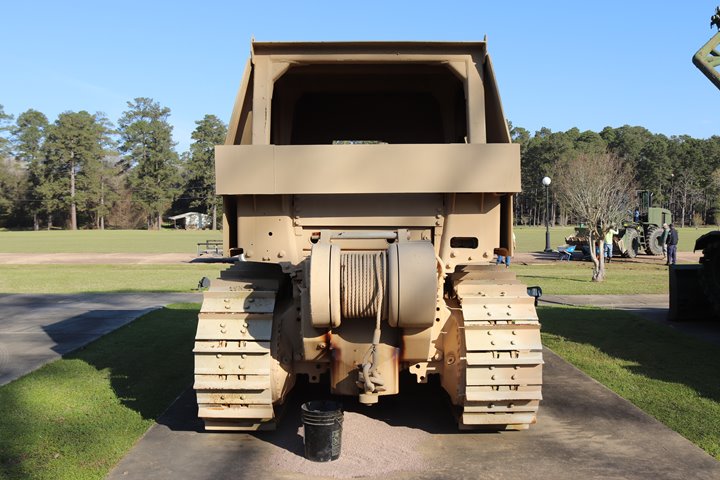
Author's photo added 3-22-2018.
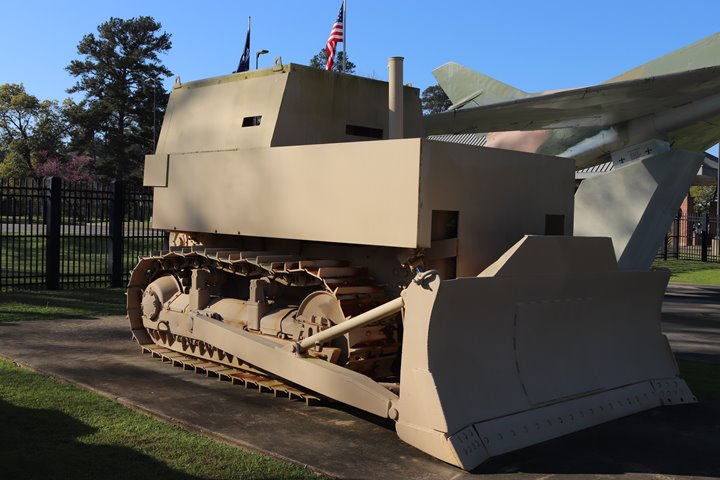
Author's photo added 3-22-2018.
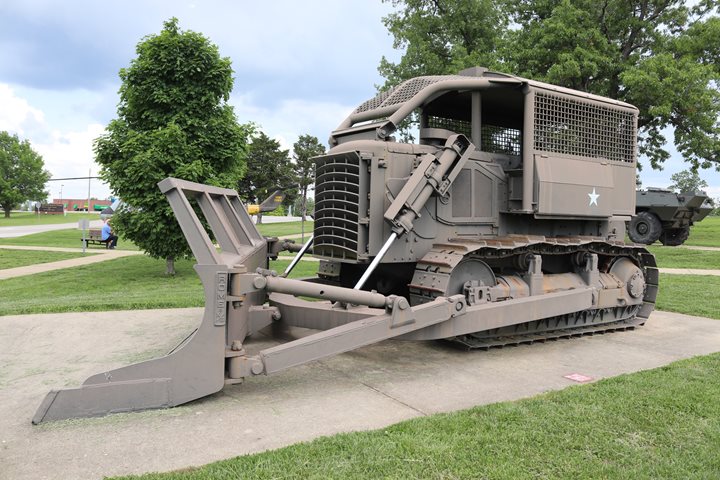
This Vietnam era Caterpillar D7 has a Rome
Plow which was used for land clearing in the jungle. Author's photo added 6-19-2018.
|
Caterpillar World War Two D7 Tractor Models - D8800 Engine |
| |
Years |
Number produced |
Comments |
| D7 7M |
1940-1944 |
10,000??? |
D8800 engine 74 inch track gauge |
| D7A 1T1001 |
1943 |
138 |
Armor plated version of the D7 7M, blade
operated by twin hydraulic cylinders and equipped with a Hyster
D7N winch on the rear |
| D7 3T |
1944-1955 |
28,000 |
This was built to military specifications to
accommodate the conditions for use in the hostile conditions on
the battle front. |
| D7 4T |
1944-1945 |
11,959 |
These
were built by American Car and Foundry at its Berwick, PA
factory. |
| D7 6T |
1945 |
1,054 |
This
model was built for the US Navy and had six rollers rather than
the five on other model D7s. |
| D7 High Speed |
1942-1943 |
310 |
D7 High Speed Tractor M1 - This was modified to
function as a prime mover for artillery. The tractor was
modified to travel at 11 miles an hours by modifying both the
engine governor and the gears in the transmission. |
There was such a need for the D7 3T that
Caterpillar shipped components to
American Car and Foundry which then assembled the parts into approximately
1,000 tractors.
|
Caterpillar World War Two D7 Tractor US Military Deliveries
From the numbers below it can be seen that the US Army took
85% of the D7 production over the course of WWII. In 1945
the Army and Navy took 97% of the production of the D7.
This is in spite of the fact that the military was only
allocated 85% of production. |
| |
1942 |
1943 |
1944 |
1945 |
Totals |
| D7 Yearly Production |
1,878 |
2,255 |
7,885 |
8,485 |
20,503 |
| D7 Yearly US Army
Deliveries |
1,150 (61%) |
1,961 (86%) |
7,094 (90%) |
7,239 (85%) |
17,444 (85%)
|
| D7 Known US Navy
Deliveries |
|
|
|
1,054 (12%) |
|
D8: In the southwest Pacific, each LST had a D8 with a
bulldozer assigned to it. Each was equipped with air intakes and
exhausts that extended above the tractor to allow for deep water
operation. The D8s were placed at the front of the ship. When
the LST could not get all the way on to the beach to unload its cargo,
the D8 would be first off and make a sand ramp to the ship.
I have been looking for a World War Two era
D-8 ever since I started researching Caterpillar's contribution to
winning World War Two in late 2017. In September 2020, I finally I found the one below
at a private owner's military vehicle collection located in Michigan. I was there to look at several other
of his vehicles, not knowing the D-8 was in his collection.
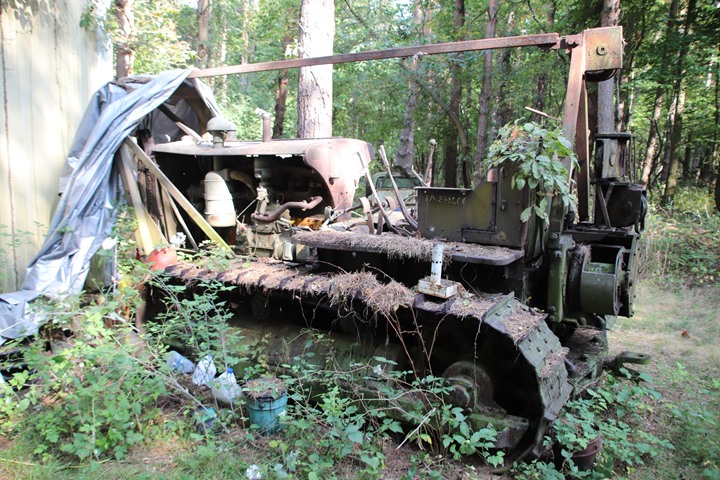
Author's photo added 9-25-2020.
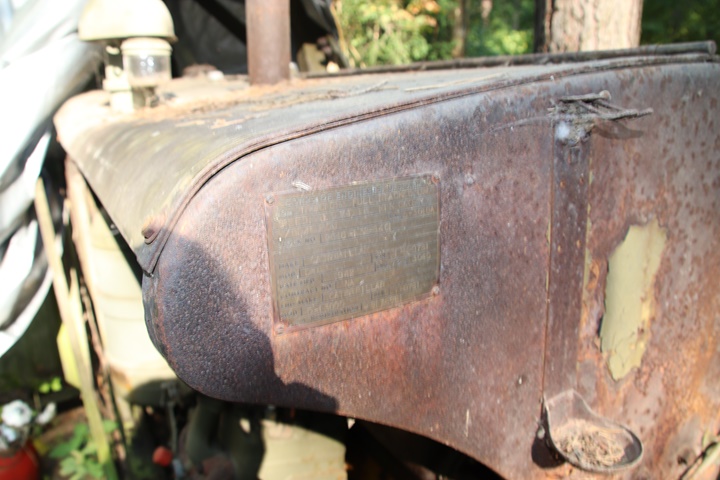
The original data plate is still on the D-8. Author's photo added
9-25-2020.

D-8 Serial Number LH-9781 was built in 1942
and carried USA Registration Number 9176981. Author's photo added
9-25-2020.
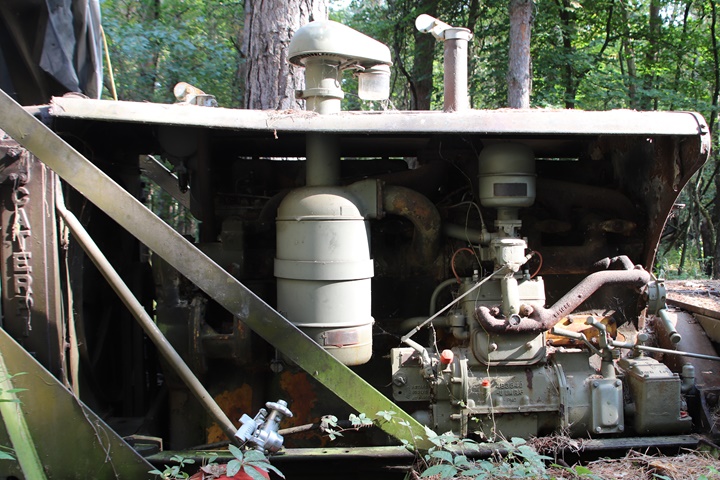
The gasoline starting engine can be seen in
this photo. Author's photo added 9-25-2020.
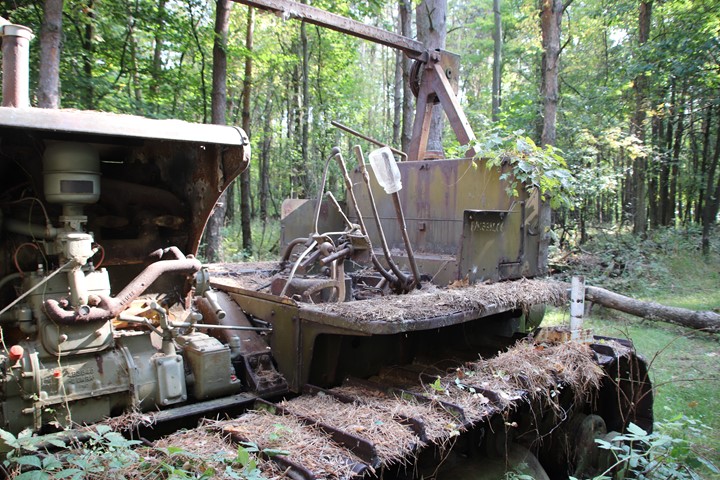
Author's photo added 9-25-2020.
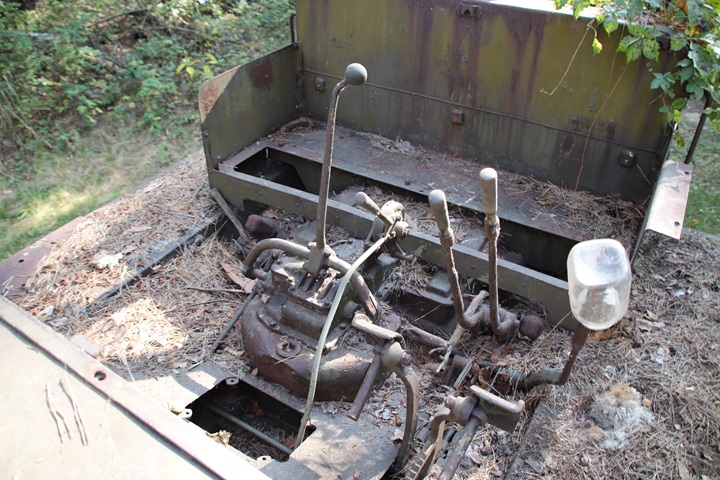
Author's photo added 9-25-2020.
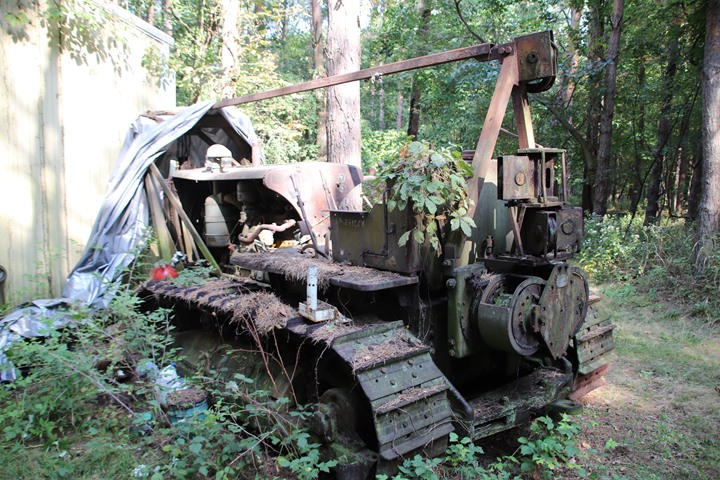
Author's photo added 9-25-2020.
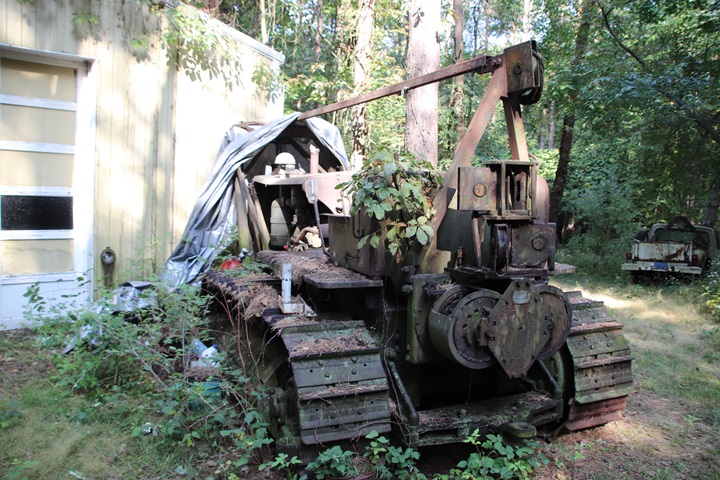
Author's photo added 9-25-2020.
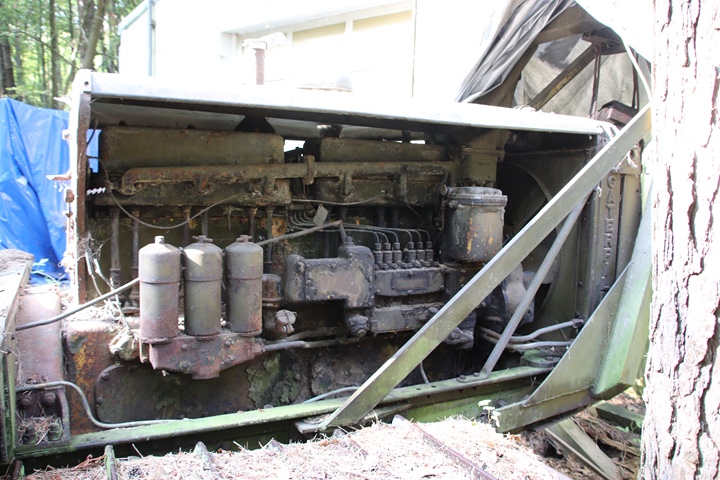
The D-8 was powered by a six-cylinder
Caterpillar engine. Author's photo added 9-25-2020.
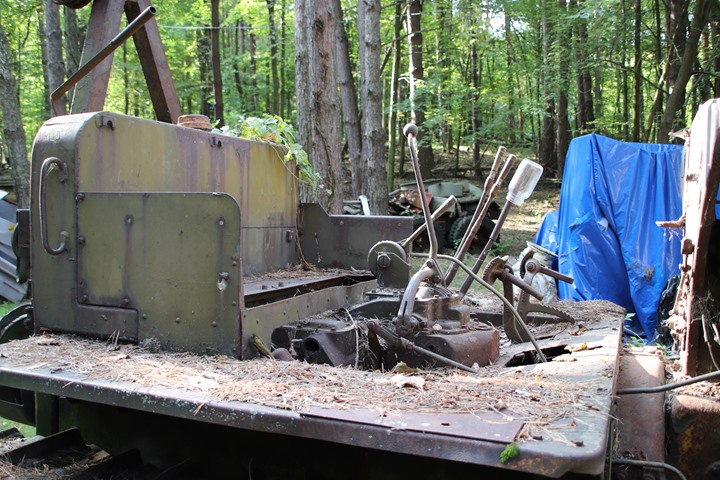
Author's photo added 9-25-2020.
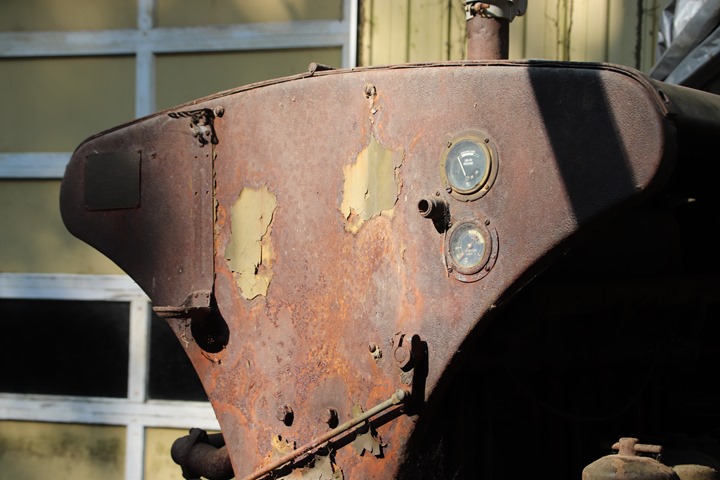
In 1942 instrumentation was sparse.
This only has oil pressure and water temperature gauges. Author's
photo added 9-25-2020.
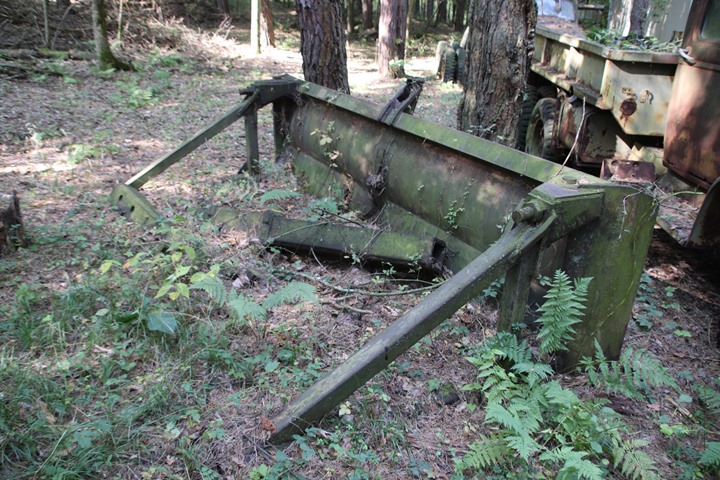
The bulldozer blade has been removed and is
sitting a few feet away from the tractor. Author's photo added
9-25-2020.

Generator sets:
Industrial power units were introduced in
1939. During World War Two Caterpillar built six different versions.
D13000:
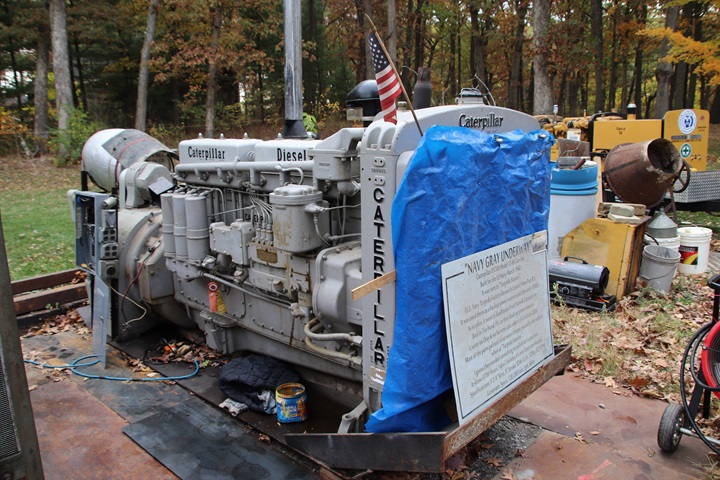
This 1940 Caterpillar D13000 is owned by
Mike Schreiber of Winfield, IN. Author's photo added 11-1-2020.
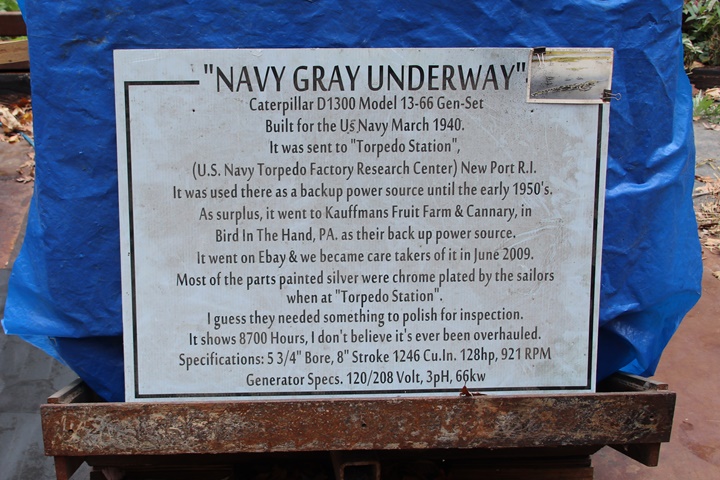
This sign is incorrect. This is a
D13000, not a D1300. The data plate shown in the next photo
confirms the identity of the engine. The U.S. Navy's Torpedo
Station in New Port, RI was responsible for the development and testing
of the torpedoes used in World War Two. Unfortunately, it is
infamous for not properly testing its new detonator designs for World
War Two. This resulted in many duds and misses by American
submarines and destroyers in the early part
of the war. However, the Cat
D13000 no doubt performed just as it was expected and supplied backup
electrical power when required. Author's photo added 11-1-2020.
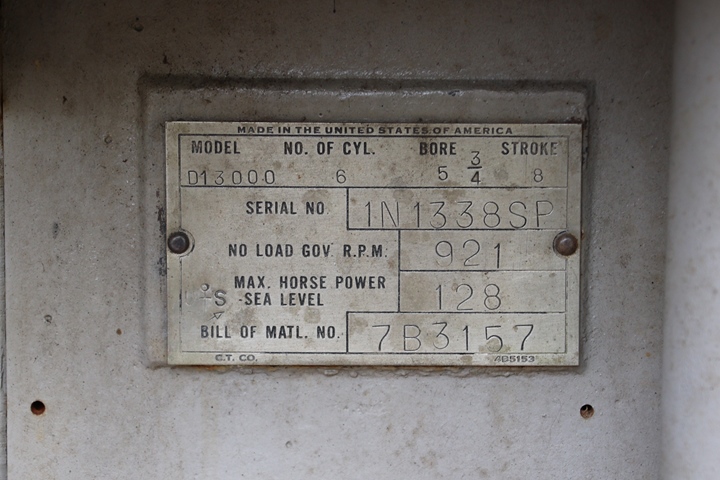
Author's photo added 11-1-2020.
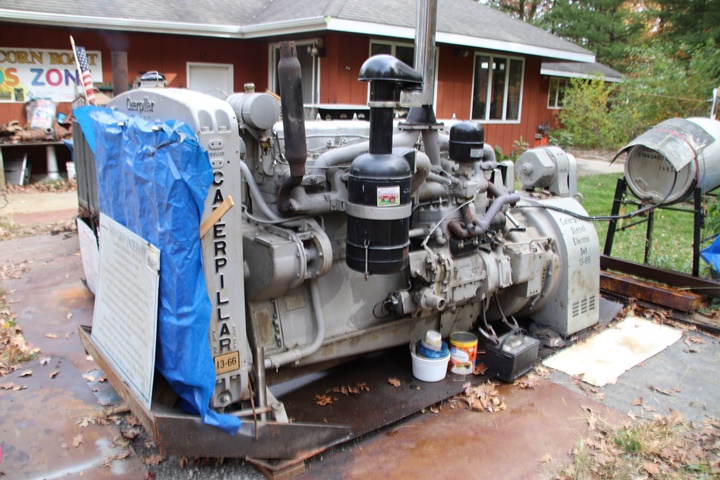
Author's photo added 11-1-2020.
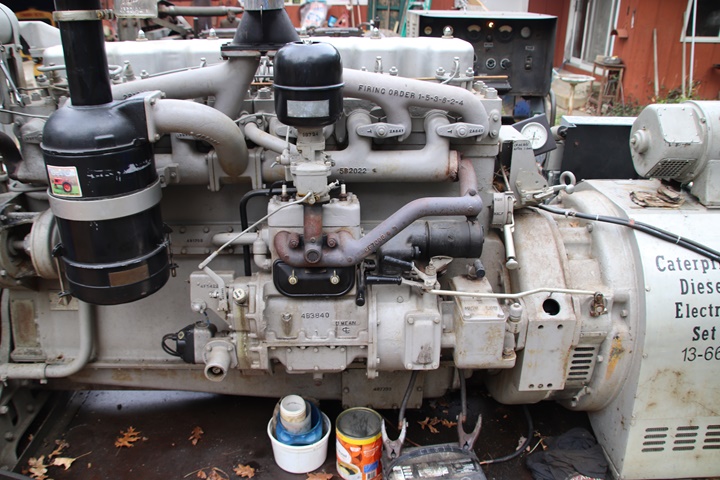
The D13000 has a two-cylinder gasoline
engine to start the diesel. The gasoline engine has a cranking
motor to start it and a magneto to provide the spark. Author's
photo added 11-1-2020.

Author's photo added 11-1-2020.

Author's photo added 11-1-2020.
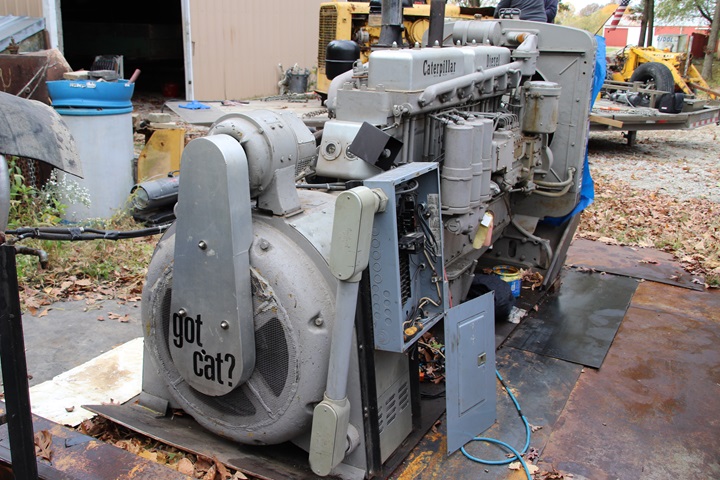
Author's photo added 11-1-2020.
D3400:
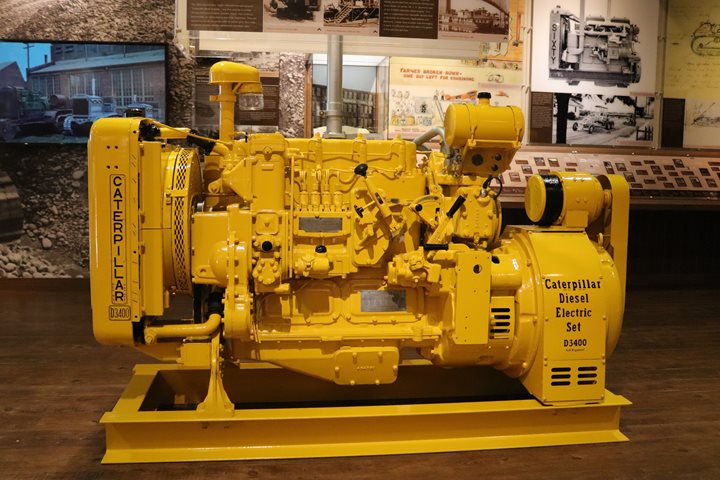
This 1947 D3400 Diesel Electric Set is on display at the Caterpillar Visitor Center. It is similar to the D3400
sets that Cat produced during World War Two. Author's photo.
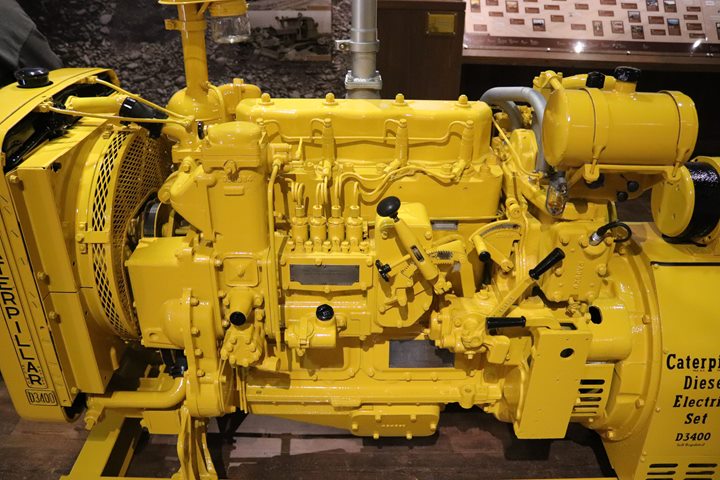
This has been restored to mint condition.
The sparkplug and sparkplug wire for the two-cylinder pony motor can be
seen at the right end of the engine next to the generator.
Author's photo.
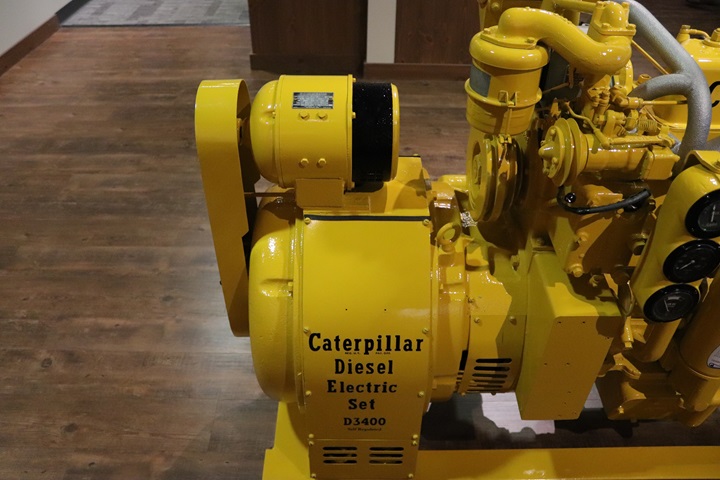
The second sparkplug and wire are
visible on the other side of the engine. Author's photo.
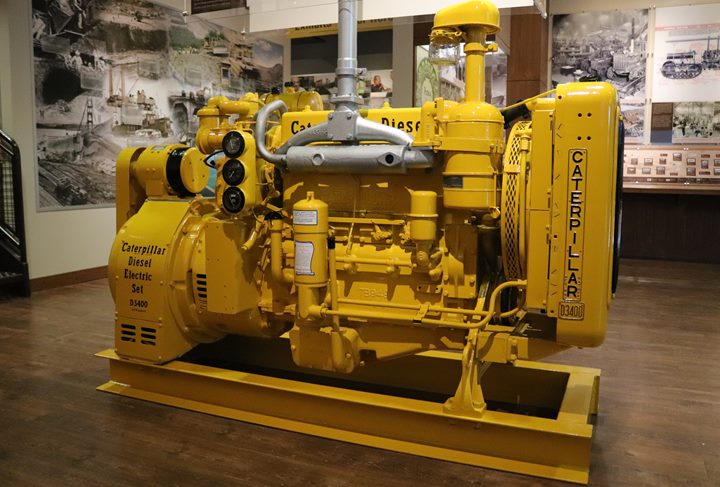
This is one of 6,047 34-15 generator sets
produced between 1938 and 1947, when the engine was discontinued.
The electric generator produced 15 KW 3-phase or 13KW single phase at 60
hertz at 1,200 rpms. During World War II, the 34-15 generator set was
used as an auxiliary power generator on 534 American Victory ships.
Author's photo.
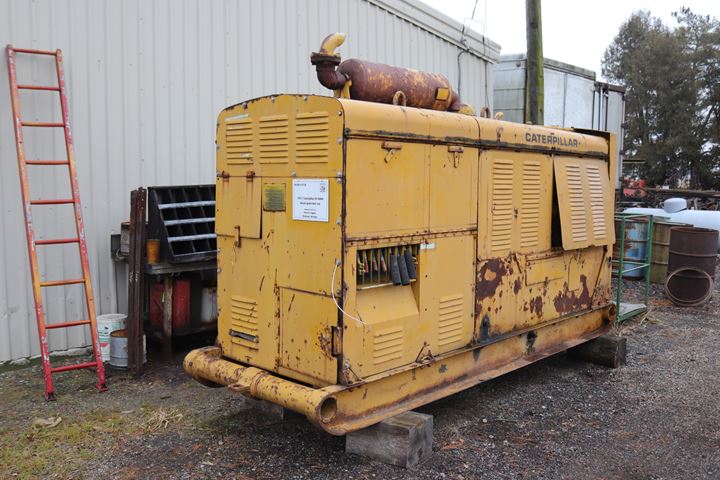
Note the size of the unit compared to
the eight-foot ladder against the building. Author's
photo.
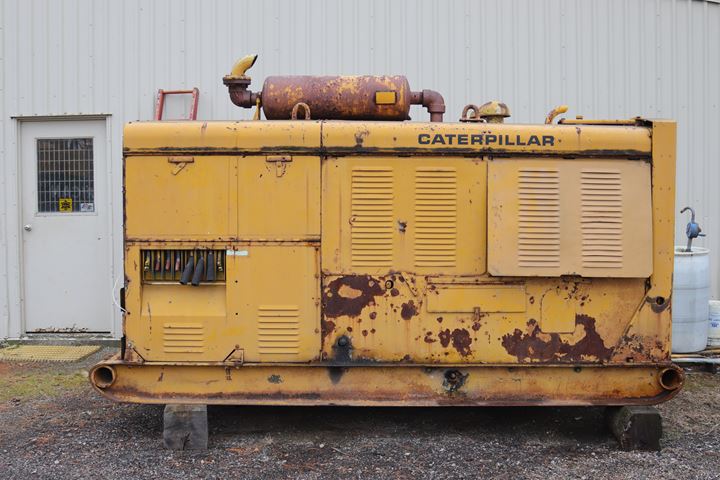
Author's photo.
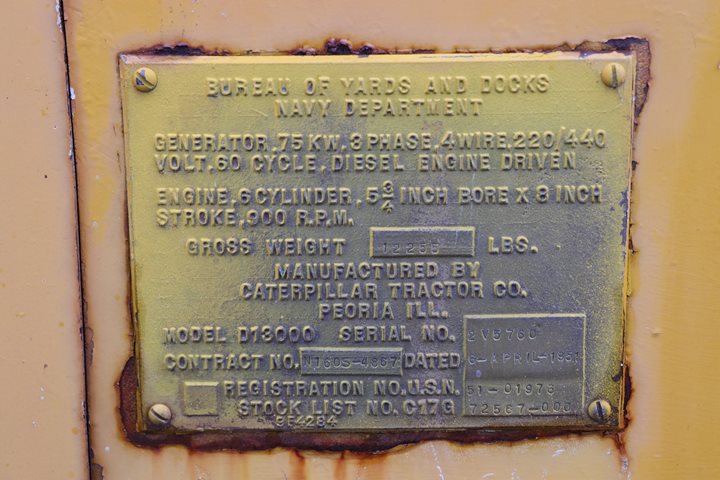
Author's photo.
Graders:
Caterpillar supplied some road graders to the US military in World War
Two, but
not on the scale of its tractor production.
|
Allocation of Graders to
Military Units |
|
Type of Grader |
Number in a US Army
Engineer Aviation Battalion |
Number in a US Seabee Battalion |
|
Leaning Wheeled, Towed |
1 |
0 |
|
Motorized, Diesel |
6 |
3 |
|
Caterpillar
World War Two Grader Production
Five of the six models were terminated early in the war
to standardize on the Diesel No. 12. |
|
Model |
Years produced |
|
No. 212 |
1939 to 1942 |
|
Diesel No. 212 |
1939 to 1943 |
|
No. 112 |
1939 to 1942 |
|
Diesel No. 112 |
1939 to 1942 |
|
No. 12 |
1939-1942 |
|
Diesel No. 12 |
1938-Present |

Now how cool is this? A
Caterpillar No. 44 grader on display next to a M4A3(75) Sherman
tank. The grader is the first piece of equipment visitors see
after leaving the Louisiana National Camp Beauregard Museum
building. Besides using Diesel No. 12 powered graders in
World War Two, the US Army would pull a Caterpillar No. 44 behind a
tractor. It was an important tool for military construction
teams during the war. Author's photo added 3-22-2018.
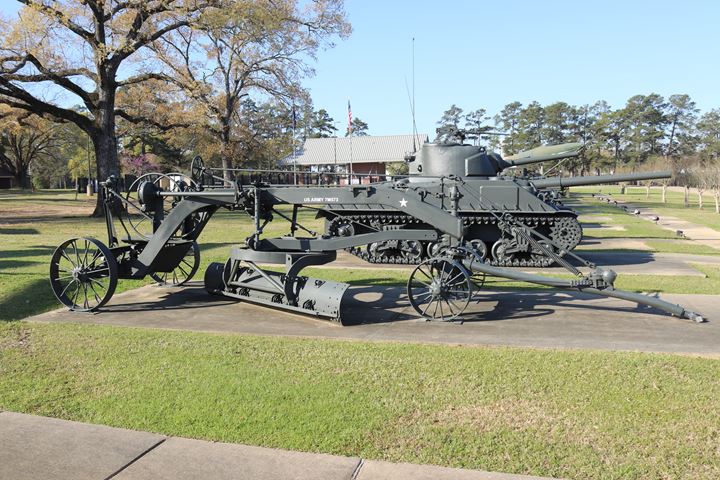
Author's photo added 3-22-2018.

Author's photo added 3-22-2018.
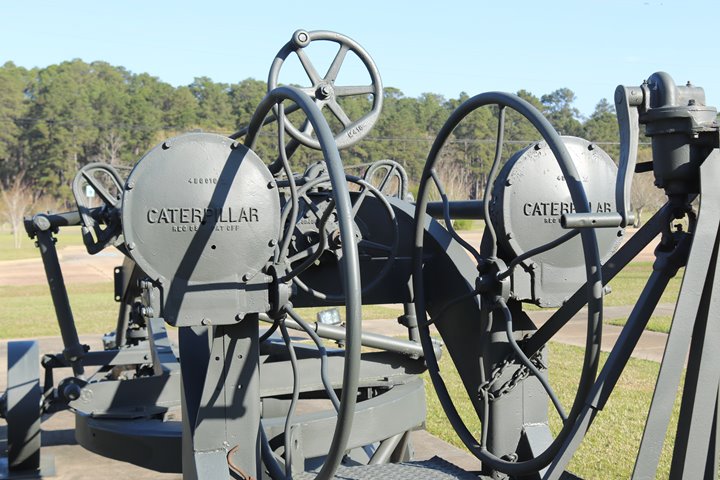
Author's photo added 3-22-2018.

Author's photo added 3-22-2018.
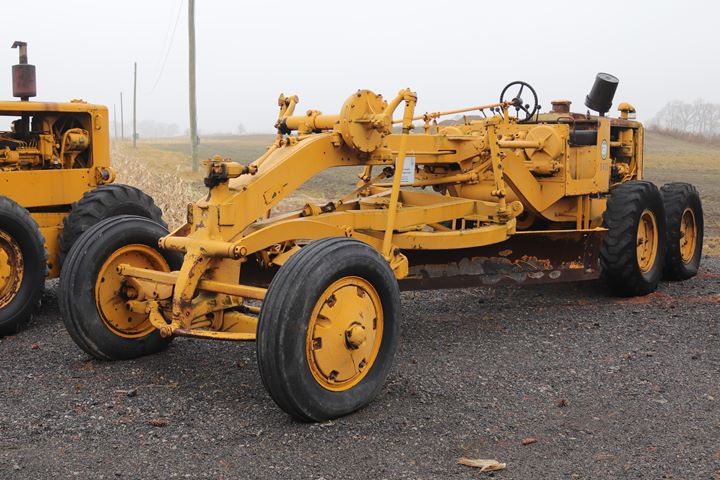
This 1940 Caterpillar Diesel No.12 grader
was the model on which the company standardized and provided
to American military engineering battalions during WWII. Author's photo from
the National Construction Equipment Museum in Bowling Green, OH.
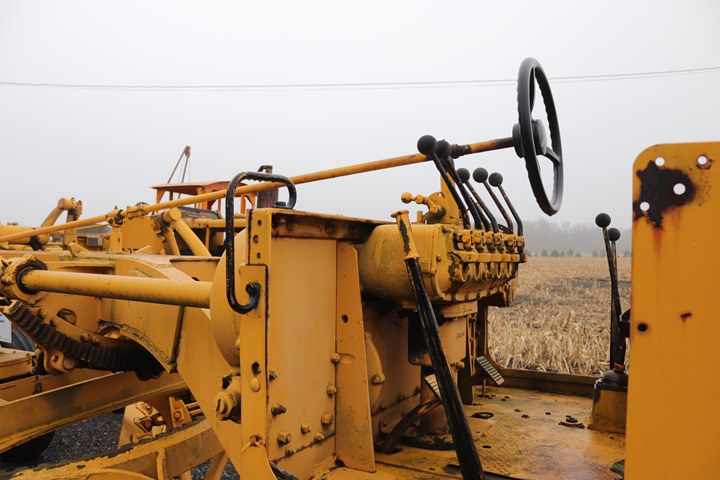
Author's photo.
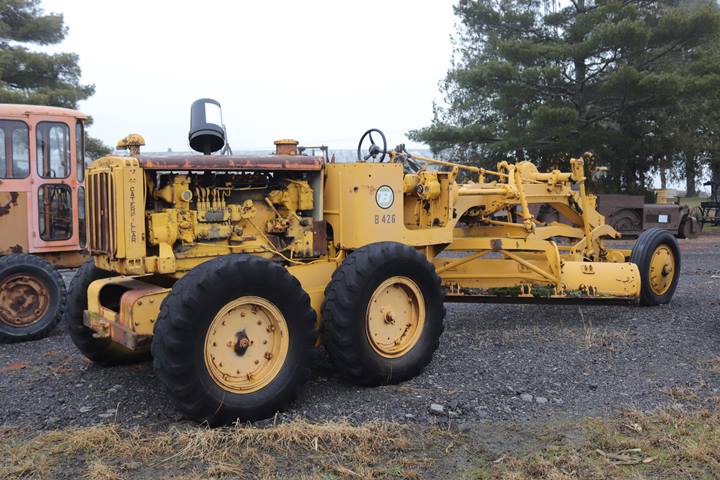
Author's photo.
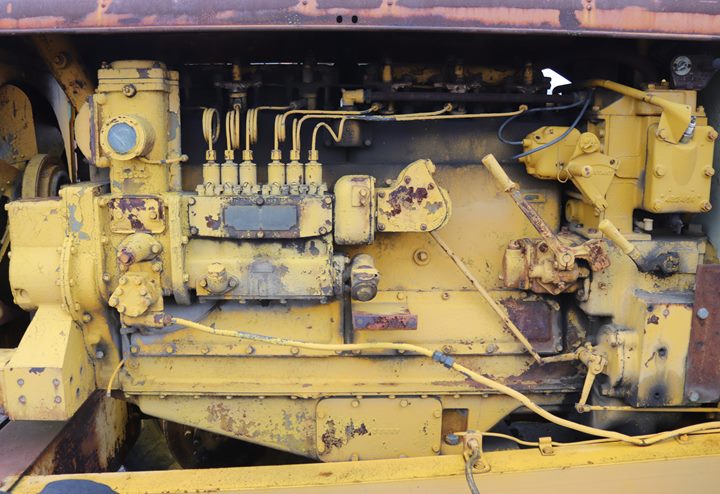
Author's photo.

Author's photo.
Wheeled tractors:
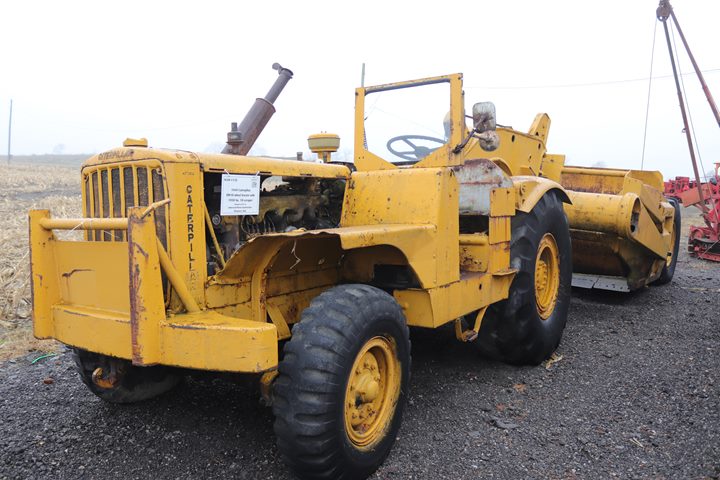
The DW10 wheeled tractor and the DW6 were introduced in 1941 in response to
the LeTourneau Turnapull. Production stopped in 1943 but resumed
in 1945. While the wheeled tractors did not serve with the
military overseas, they were used in shipyards to move modular ship sections
to the construction site. This DW10 was built in 1949.
Author's photo from the National Construction Equipment Museum in
Bowling Green, OH.
RD-1820 Radial
Tank Engine: This sounded like a good idea at the time. In
July 1941, US Army Ordnance approached Caterpillar about
converting a Wright R-1820 Cyclone gas-powered aviation engine into a
diesel-powered tank engine. Caterpillar had established itself as
the
leader in diesel engine technology in the 1930s, so its involvement made
sense. Caterpillar formed a new company called the Caterpillar
Military Engine Company, which built a new plant at US Government expense
in Decatur, IL to produce the engines. The plant was
tooled for a build rate of 1,000 engines per month. By January 1942,
Caterpillar had a prototype engine. By year's end, two prototype
tanks were built using the engines. These engines
could not only run on diesel fuel, but other fuels including 100 octane
aviation fuel. In October 1943, Chrysler started production of the
M4A6 Sherman tank in the Detroit Tank Arsenal. Army Ordnance
ordered 750 of the M4A6 Caterpillar RD-1820 powered Sherman tanks but
cancelled the order after 75 units. The last one was produced in
February 1944. Only 120 engines were produced in Decatur.
In the two years since Caterpillar started
on the engine, the engine shortage had been reduced. Chrysler,
Ford, and General Motors all had engine technology available in 1942 for
installation in M4 tanks. Ford's 500 HP V-8 engine became the
engine of choice for the US Army, and the RD-1820 was no longer needed.
As the Army started to move offensively in 1943 in the Southwest
Pacific, North Africa, Sicily, and Italy, it learned
that modern warfare required advanced bases, especially air-fields, to
take the fight to the enemy. The invasion of Europe, planned
for 1944, would need a huge number of tractors. The
invasion of Japan was planned for late 1945 or early 1946. What
the US Army really wanted and needed for the rest of the war was more D-7
Tractors. So, Decatur was converted to production of that vehicle. Caterpillar
production of D-7 Tractors tripled from 1943 to 1944.
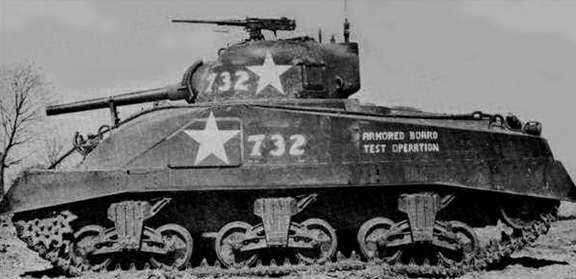
This is one of 75 M4A6 Sherman tanks produced with
the Caterpillar RD-1820 engine. Today, none of the tanks nor
engines are known to exist.
M4 Transmissions and Differentials:
Caterpillar produced transmissions and
differentials for many of the 49,234 Sherman tanks built during WWII.
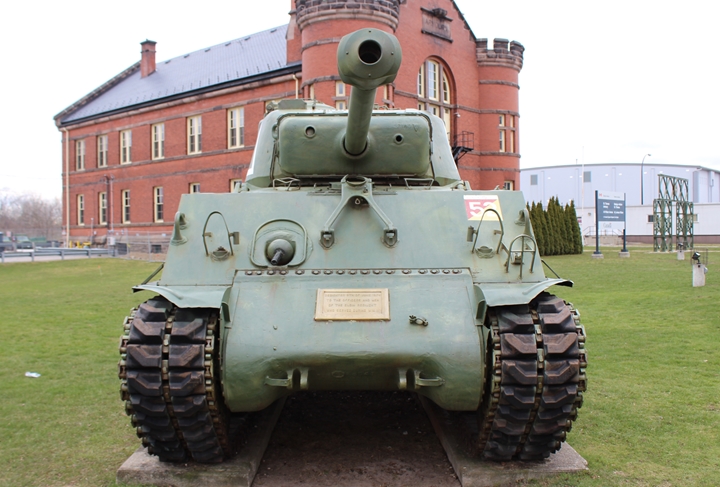
The Sherman tank had the engine in the rear
of the tank. The drive shaft ran from the back to the front of the tank, where
the power was applied to the tracks. The differential, or Final
Drive Unit, is the cast piece on the front of this Fisher Body built
M4A2 tank. Author's photo.

Looking inside a cut-away tank at the Canadian War Museum in Ottawa, ONT,
one can view the M4A2 Sherman transmission inside the tank. This
was located to the right of the driver's position in the
background. Author's photo.
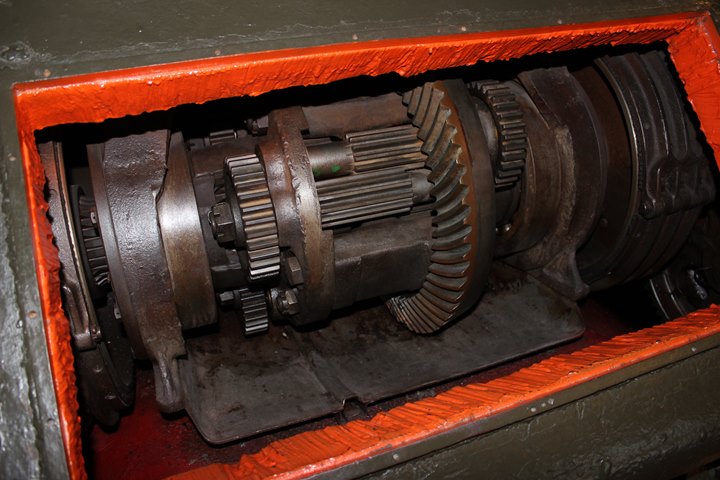
The next two photos show the internal gears
and brakes that Caterpillar manufactured before assembling them into the
Final Drive Unit. Author's photo.
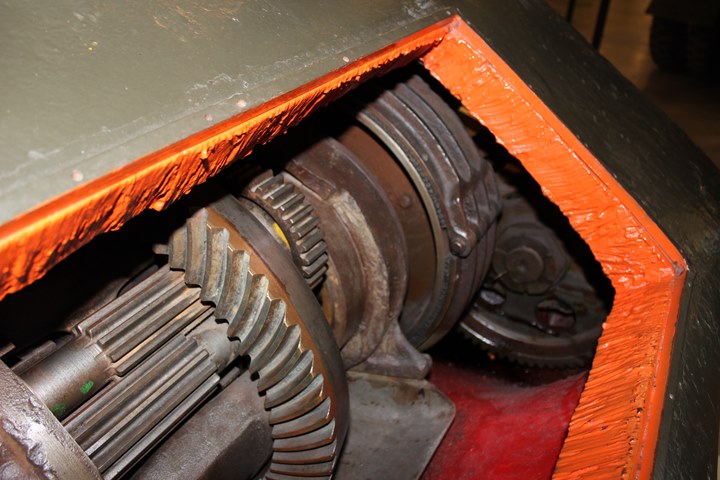
Author's photo.
155mm Howitzer M114 Gun Carriage:

Caterpillar built complete carriages for the
M114 155mm howitzer, like this one on display at the Indiana Military
Museum in Vincennes, IN. Author's photo.
37mm Shells:
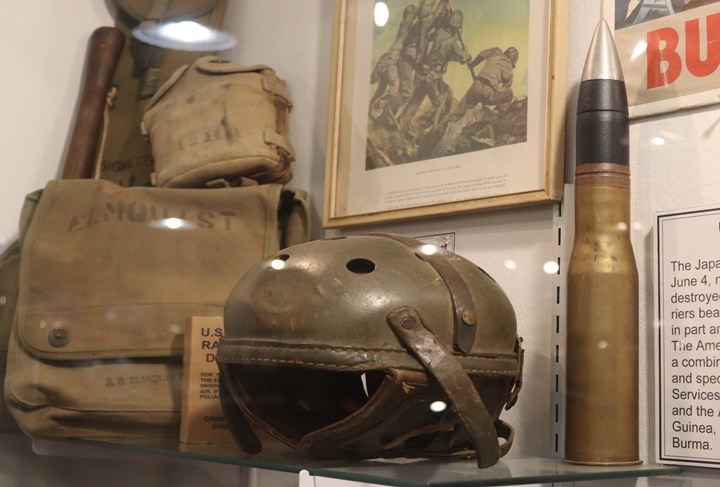
Also, this 37mm round is on display at the Indiana Military
Museum. The San Leandro, CA Caterpillar plant
produced the projectile portion of the round. Author's Photo.
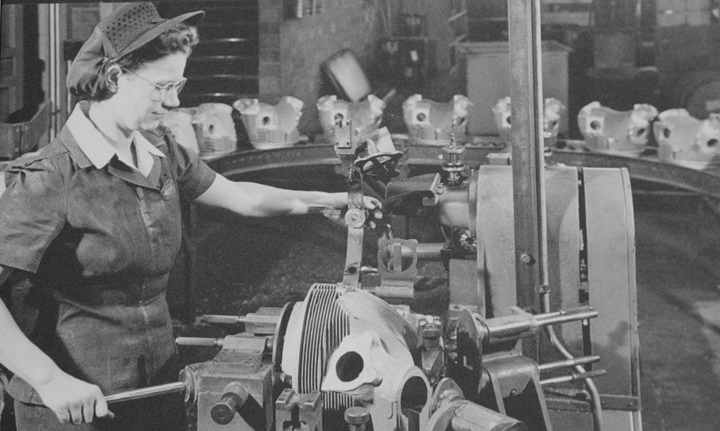
A female operator works on cylinder heads
for the RD-1820 radial diesel engines at the Decatur, IL plant during
World War Two. Photo added 11-4-2019.
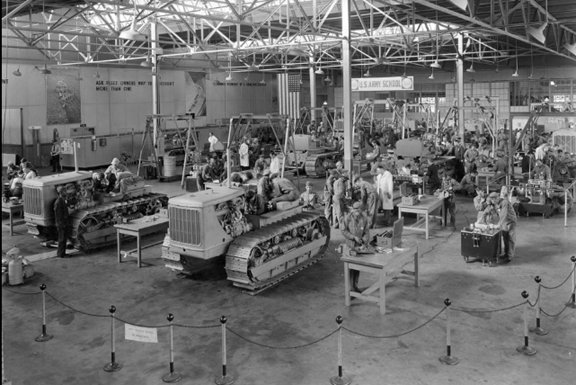
This photo shows the Caterpillar U.S. Army
Training school for army mechanics, which ran in Peoria. Photo added
11-4-2019.

Army engineers work at an Aleutian Island
Army Air Forces base during World War Two. In the background are
the tents the soldiers lived in, P-40 fighters and OA-10 patrol
aircraft. Photo added 11-4-2019.
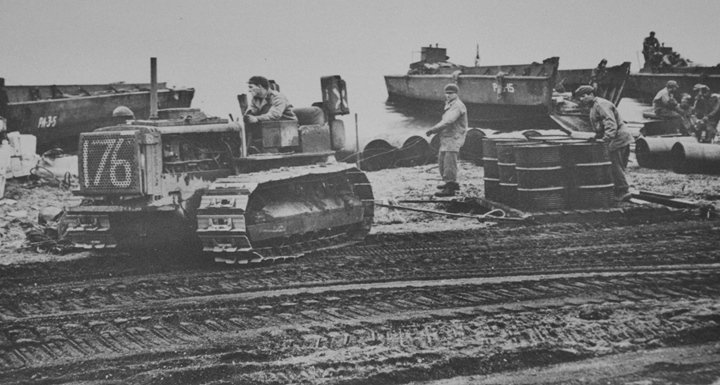
This Caterpillar D4 is also at the Aleutian
Islands. It is pulling skids containing 55-gallon barrels that
have come ashore on the LCVs in the background. Photo added
11-4-2019.
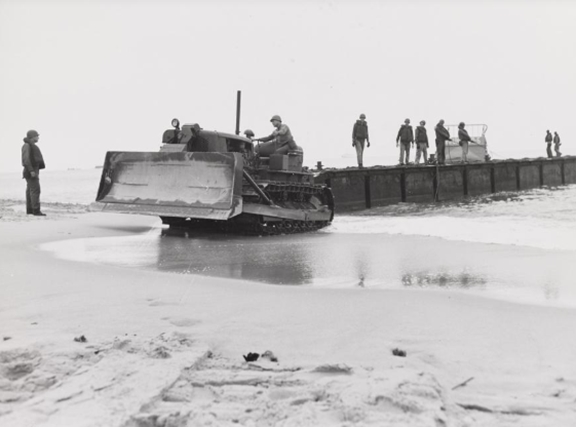
This Seabee D7 is pulling a Rhino dock onto
the beach. The Rhinos could provide direct access for vehicles to
travel from an LST to the beach without having to go through the
water. This was extremely helpful when the LSTs could not get up
on the beach. Photo added 11-4-2019.
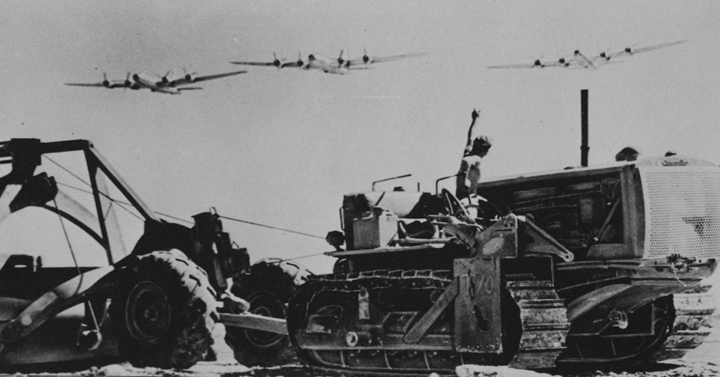
A Seabee operating a D8 waves at three B-29s
on one of the Marianas Islands. Photo added 11-4-2019.
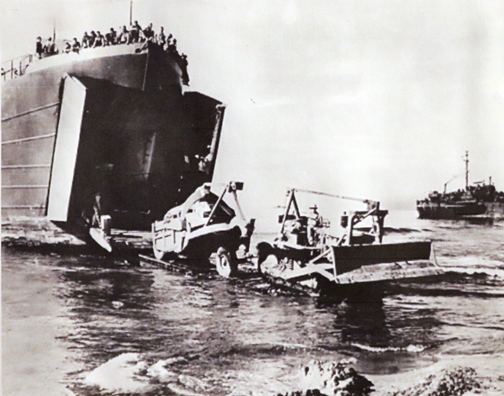
This photo shows a Caterpillar D7 going ashore from an LST in
the South Pacific in 1944. However, the photo shows much more.
Firstly, it shows the versatility of the crawler tractor with the LeTourneau
Model WCK7 Angledozer mounted to the front while it pulls a LeTourneau
Model 18 Carryall. Secondly it shows the close relationship of
Caterpillar and LeTourneau during World War Two.
The story of the Caterpillar Tractor Company
in World War Two cannot be told without telling the story of R.G.
LeTourneau, Inc.
To learn more about LeTourneau's contribution to winning World War II,
go to:
R.G. LeTourneau in World War II
|





























































































































